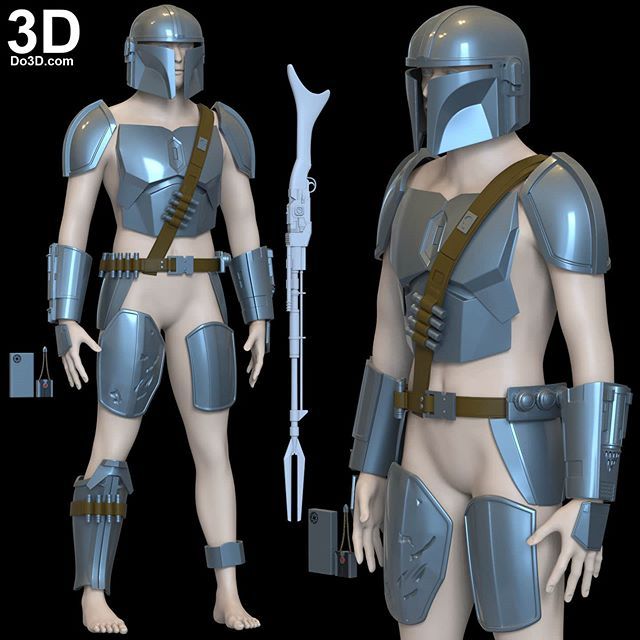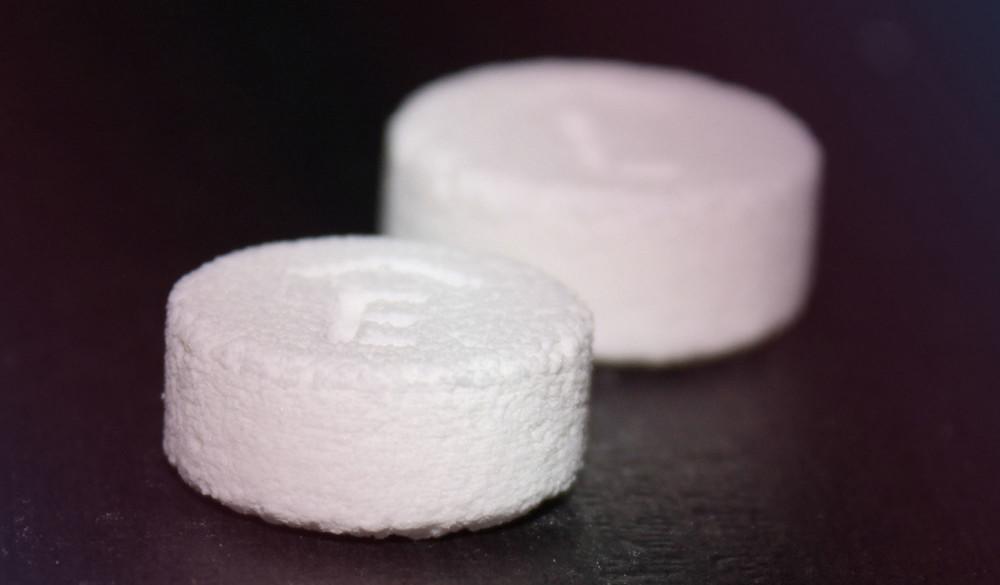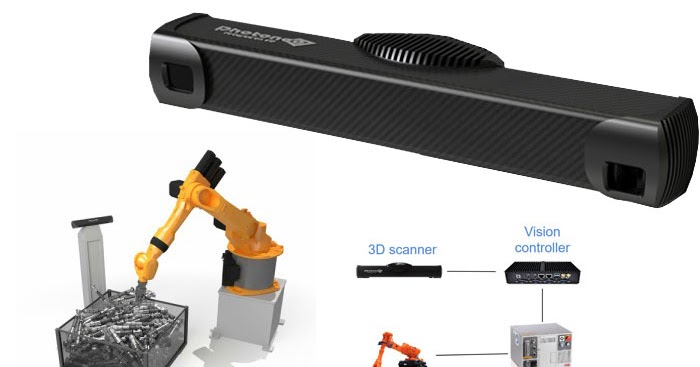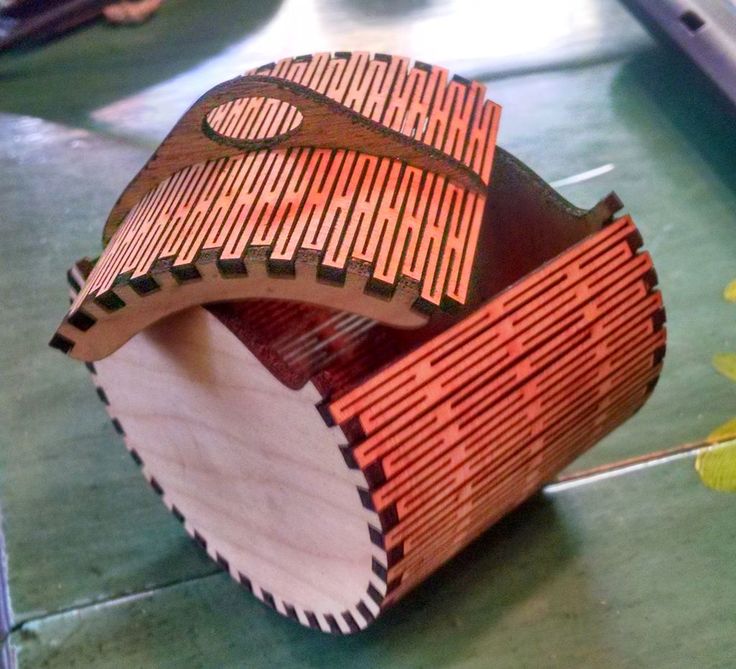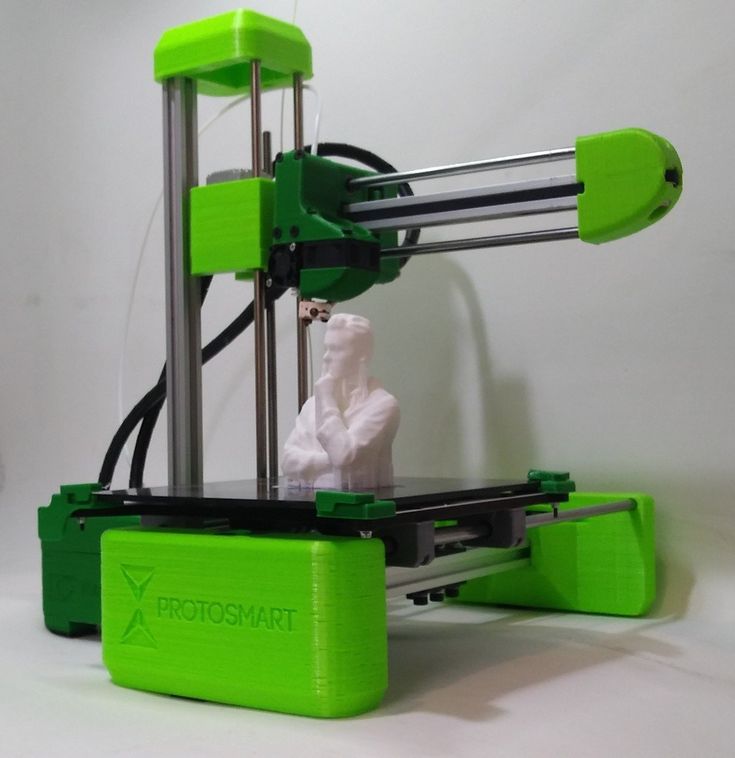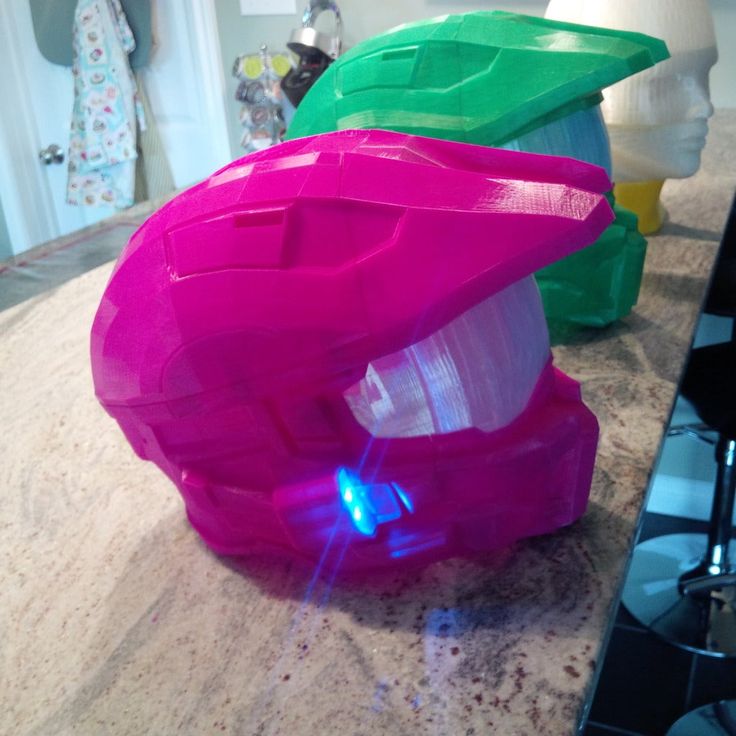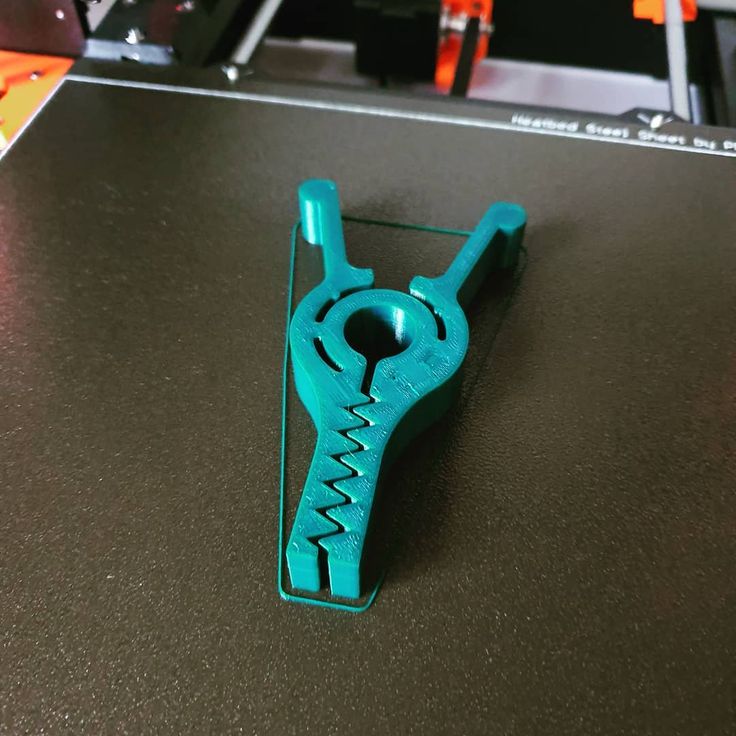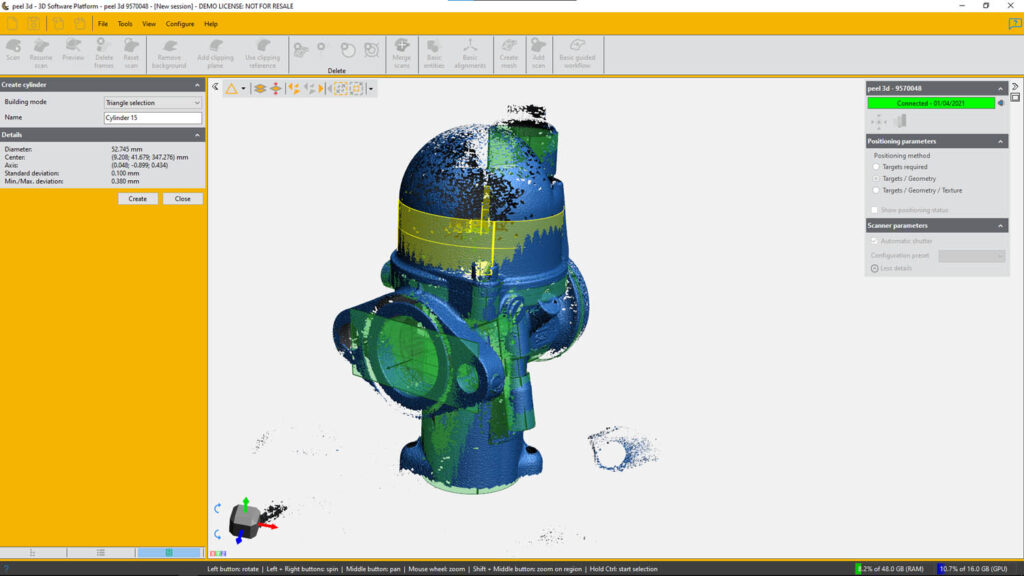3D printer for cosplay armor
Best 3D Printer For Cosplay Armor & Props (2022 Update)
- Last Updated On September 14, 2022
Have you ever taken hours to create your own cosplay prop with cardstock and a mix of fiberglass and resin? Or used wood glue to piece your cosplay armor together?
Well I have too.
While fun it is very time-intensive and needs a little bit of DIY ingenuity.
Now, there’s a more efficient way to create your next costume and props. Enter the 3D printer!
While any 3D printer will get the job done there are specific considerations for printing cosplay costumes and accessories that’ll guarantee your costume design turns into reality.
After more than 10 hours of tinkering and research let’s take a look at some of the best 3D printers for cosplay.
Creality CR-10S
Build volume: 300 x 300 x 400 mm
Click For Best Price
Check Latest Price
Prusa i3 MK3S
Build volume: 250 x 210 x 200 mm
Check Latest Price
Dremel DigiLab 3D45
Build volume: 250 x 150 x 170 mm
Check Latest Price
Table of Contents
- Top 3D Printers For Cosplay At A Glance
- 1.
Creality CR-10S (Largest Volume & Best Value)
- 2. Prusa i3 MK3S (Best Overall)
- 3. Dremel Digilab 3D45 (Best for Beginner)
- 4. QIDI TECH X-Max (Best for Prototypes)
- 5. Monoprice Maker Select PLUS (Best Budget Pick)
- 6. Lulzbot TAZ 6 (Best High-End)
- 1.
- Why 3D Print For Cosplay?
- Features To Consider for A 3D Printer For Cosplay
- Build Volume
- Resolution
- Filament Types
- Ease Of Use
- Conclusion
Top 3D Printers For Cosplay At A Glance
1. Creality CR-10S (Largest Volume & Best Value)
2. Prusa i3 MK3S (Best Overall)
3. Dremel Digilab 3D45 (Best For Beginner)
4. QIDI TECH X-Max (Best For Prototypes)
5. Monoprice Maker Select PLUS (Best Budget Pick)
6. Lulzbot TAZ 6 (Best High-End)
Below I’ll show why the top 6 are the best picks. Consider the specs carefully to make sure the best 3D printer for cosplay and props for you can do what you want it to.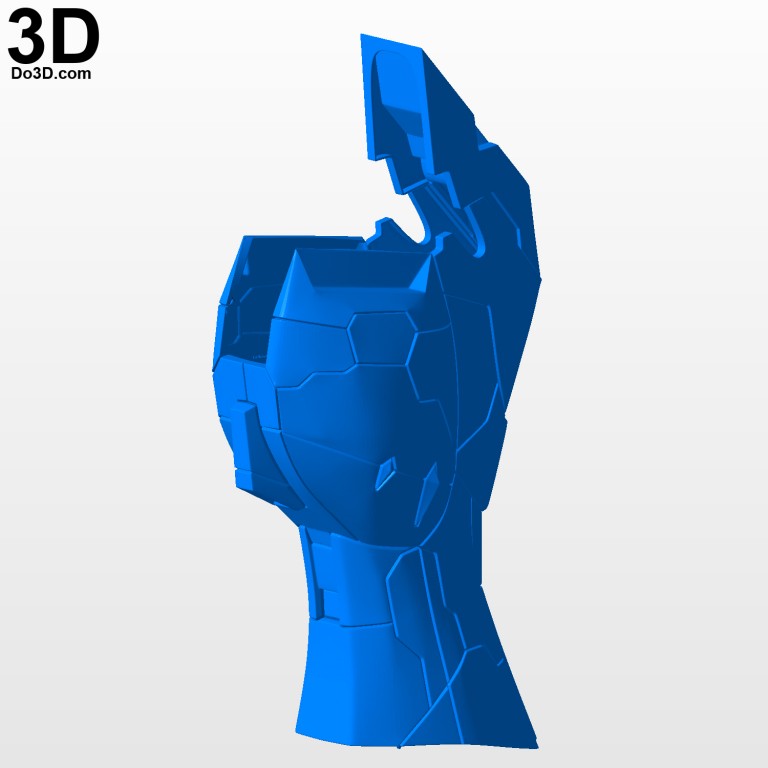
1. Creality CR-10S (Largest Volume & Best Value)
Build volume: 300 x 300 x 400 mm | Layer Resolution: 400 micron | Print Speed: 200 mm/s
Creality always has a printer in the running whenever you’re looking at DIY options. Cosplaying is no exception. Although it’s marketed as a 3D printer kit, the Creality CR-10S comes mostly pre-assembled.
This is a budget-friendly 3D printer for cosplay with a lot of punch. Let’s address the elephant in the room. This 3D printer’s build volume is so massive you could probably print an elephant on it!
The only issue is you’re selling build volume for resolution. While the print resolution is good, not great, this doesn’t matter if you’re just 3D printing large items and don’t care about how smooth the final product is. Keep in mind, you can always sand a cosplay piece to make it look more rounded.
The next thing to keep in mind is how fast this 3D printer is.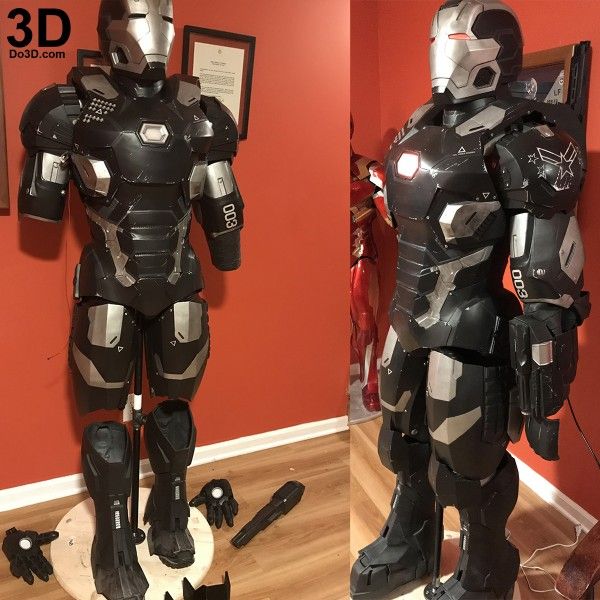 In fact, it’s one of the fastest in its space. A must-have because cosplay helmets take at least 1-2 days to print.
In fact, it’s one of the fastest in its space. A must-have because cosplay helmets take at least 1-2 days to print.
If you are looking to print big items quickly and don’t care about the smoothness, take a closer look at the CR-10S.
Also, speaking from experience, keep in mind that Creality printers usually have some stubborn traits. Bed leveling and bed adhesion can be a problem, and there will be some troubleshooting that goes into the printer. Owning this 3D printer will teach you a lot of 3D printing. If you want a machine that’s easy to use and operate then take a look at our next 3 options below.
Of course, we’re talking about a printer that’s really inexpensive. If they were to design and work out these issues, the price tag would totally go up – so no complaints here!
This machine is the best bang for your buck. You can’t print Iron Man helmets and sword props to your hearts content. It has the largest print volume and is our choice for the best value 3D printer for cosplay.
- Budget friendly
- Really robust
- Enormous build volume
- Fast 3D printing capabilities
- Bed takes a little bit to heat up
- Prints struggle to stick to the bed
Get Discount Now (Official Store)
Check Latest Price
2.
 Prusa i3 MK3S (Best Overall)
Prusa i3 MK3S (Best Overall) Build volume: 250 x 210 x 200 mm | Layer Resolution: 50 micron | Filament diameter: 1.75 mm | Print Speed: 100 mm/s
This is arguably the best 3D printer period. If you’re new to 3D printing for cosplay then this is the machine to get. The Prusa 3D printing community is one of the largest and most helpful with dedicated forums to go to for sharing ideas and the rare case of technical issues. Rare because Prusa printers are built to last.
The folks at Prusa funnel their time and money into making a clean, reliable, and powerful machine. In 2016, Prusa i3 was the most used 3D printer in the world. Yes, you read that right. Their machine has a ton of knock-off brands, and even more companies who use the i3 as the skeleton for their own 3D printer.
A printer that the entire world loves and competitors want to emulate? What makes it so special?
It has great print detail and one the faster print speeds on this list.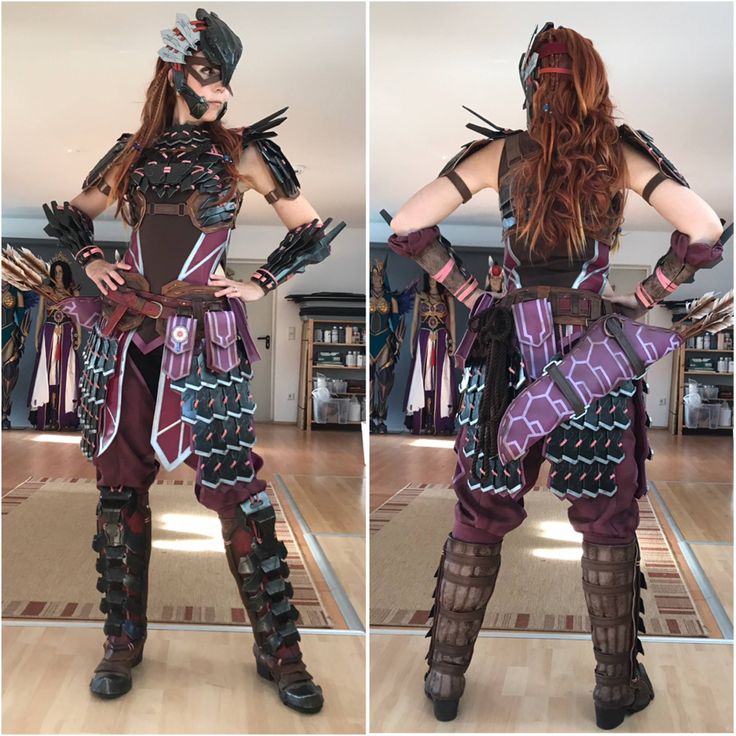 When it comes to cosplay this is a dream come true. That said, you’re looking at a smaller build volume compared to the CR-10S. So make sure you measure out the cosplay pieces you want to create.
When it comes to cosplay this is a dream come true. That said, you’re looking at a smaller build volume compared to the CR-10S. So make sure you measure out the cosplay pieces you want to create.
Prusa is also integrated into a slicing program called Slic3r. For people unfamiliar with this jargon, it means that Prusa is driving a Porsche. Slic3r is the best slicing program on the market. This makes printing on the i3 MK3S that much easier. When you purchase this machine you can either buy a kit that you assemble, or you can buy a pre-assembled version.
In my experience, it’s necessary to build your own printer at some point if you’re going to be serious about 3D printing. You get intimate knowledge about how the machine works and how to troubleshoot it.
Check out our article for the best DIY 3D printer kits.
When your i3 MK3S is assembled and ready to go, you’ll have a robust system with very little that can go wrong. There are no unnecessary components or under-designed pieces.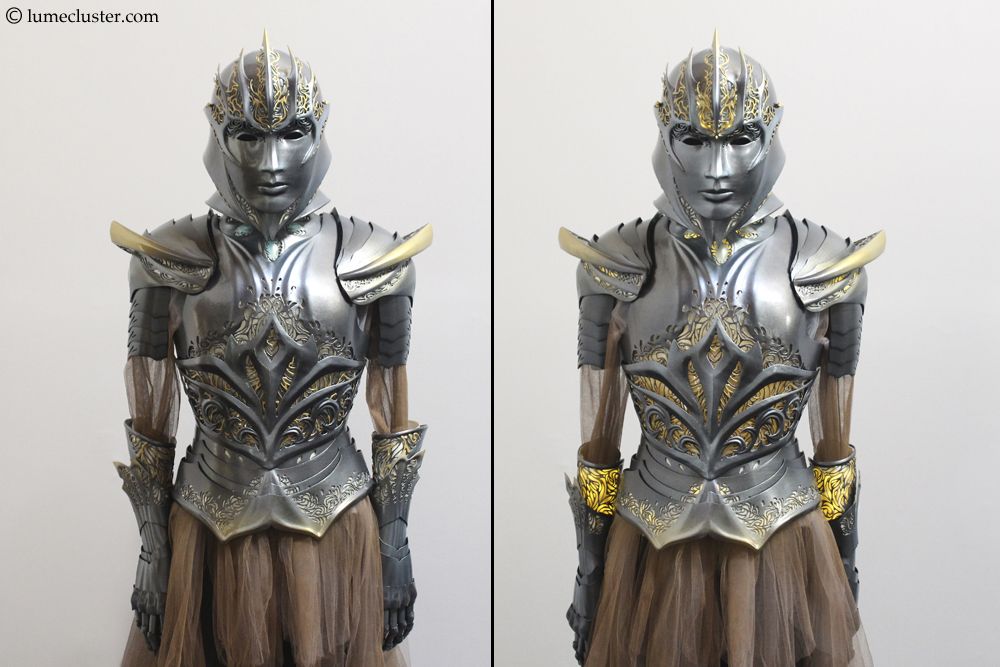 The best part is, the machine is completely open-source. This means if something breaks, you can 3D print a replacement part!
The best part is, the machine is completely open-source. This means if something breaks, you can 3D print a replacement part!
- Automatic bed leveling
- Easy to read LCD screen
- Really consistent prints
- Comes with a comprehensive assembly book
- Works with Slic3r
- Assembly required
- Troubleshooting during startup
Check Latest Price
3.
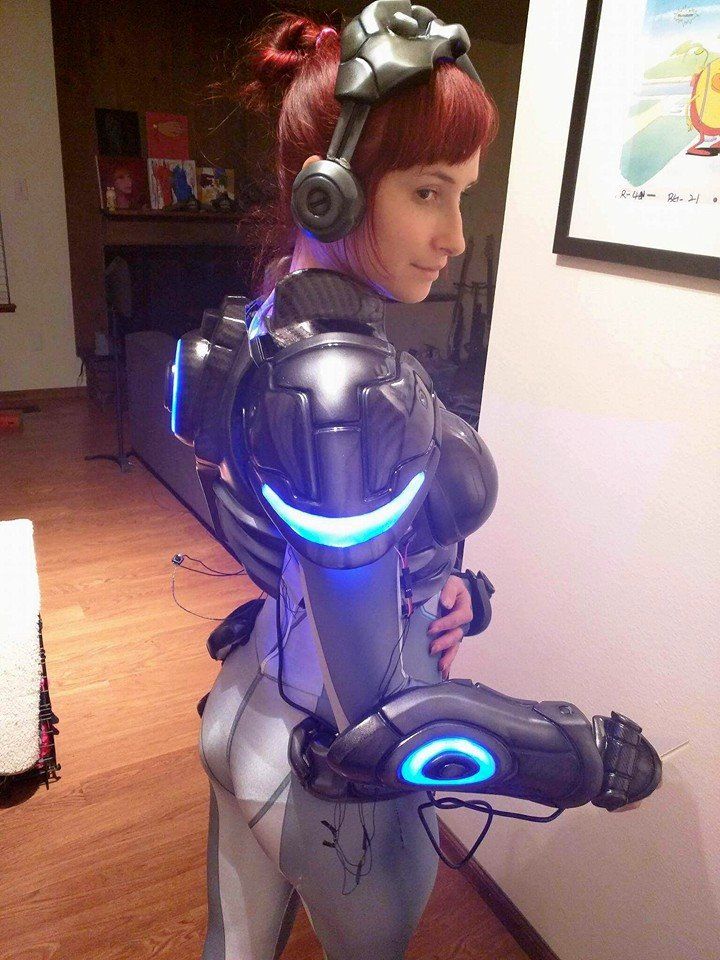 Dremel Digilab 3D45 (Best for Beginner)
Dremel Digilab 3D45 (Best for Beginner) Build volume: 250 x 150 x 170 mm | Layer Resolution: 50 micron | Filament diameter: 1.75 mm
Another solid pick to 3D print cosplay is the Dremel Digilab 3D45. Yes, that Dremel. The company that makes the Dremel rotary tool is leading the way in the 21st century with their 3D printer. Its build volume is the smallest on this list, so keep that in mind if you want to tackle big projects.
The design is also fully enclosed and looks pretty futuristic. The fact that it’s enclosed means that you will hold temperature better, and you can print ABS without the risk of breathing in the fumes.
In fact, it actually has carbon filters for the exhaust air so it’s safe to use in small, unventilated rooms. The big benefit of using this 3D printer is how easy it is. It’s one of the most user-friendly 3D printers for cosplay. It has a camera to monitor your print, a big touch screen, the bed nearly levels itself, and the interface is so smooth.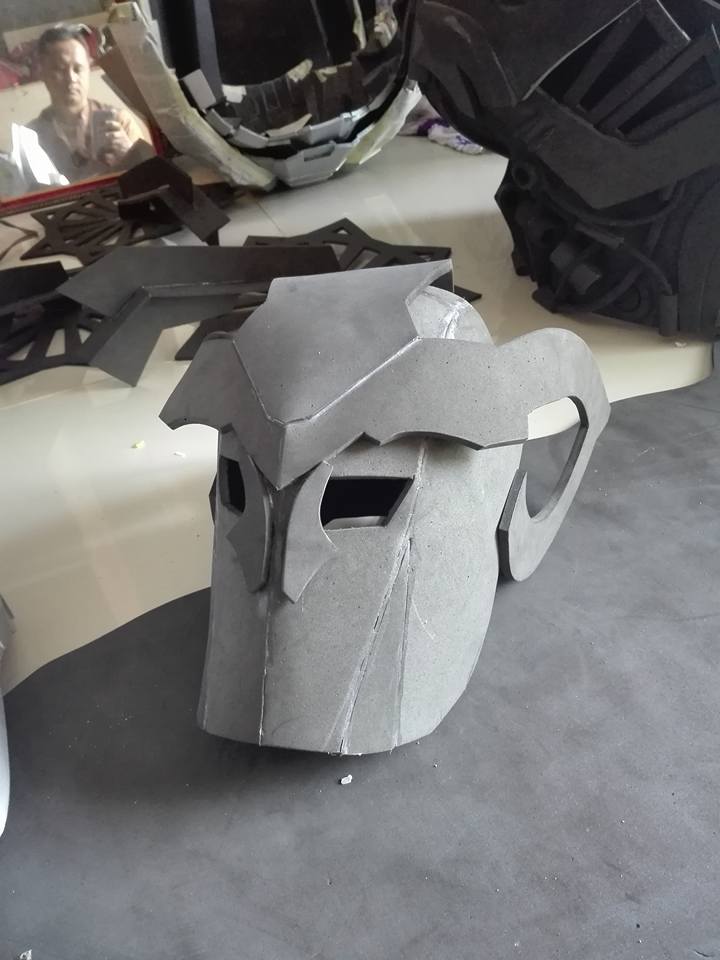 This is one of those printers that you plug in, toy around with for a few minutes, then it’s set.
This is one of those printers that you plug in, toy around with for a few minutes, then it’s set.
When you want to make a print, you essentially just hit “go” and leave the room. Yeah, it’s really that easy.
If you use one of Dremel’s filaments, the machine will recognize what kind of material it is and automatically change all of the settings. The machine is actually marketed as a classroom 3D printer, so that should tell you how user-friendly and easy-to-use it is.
If you’re willing to pay a little extra to get rid of the headaches of troubleshooting, look no further. If you want to print larger cosplay props then look at the X-Max.
- Touch screen
- Semi-auto bed leveling
- Integrated camera
- Carbon filters for exhaust air
- Incredibly easy to use
- Reliable High-quality prints with very little troubleshooting
- Very expensive
- Smaller build volume
Check Latest Price
4.
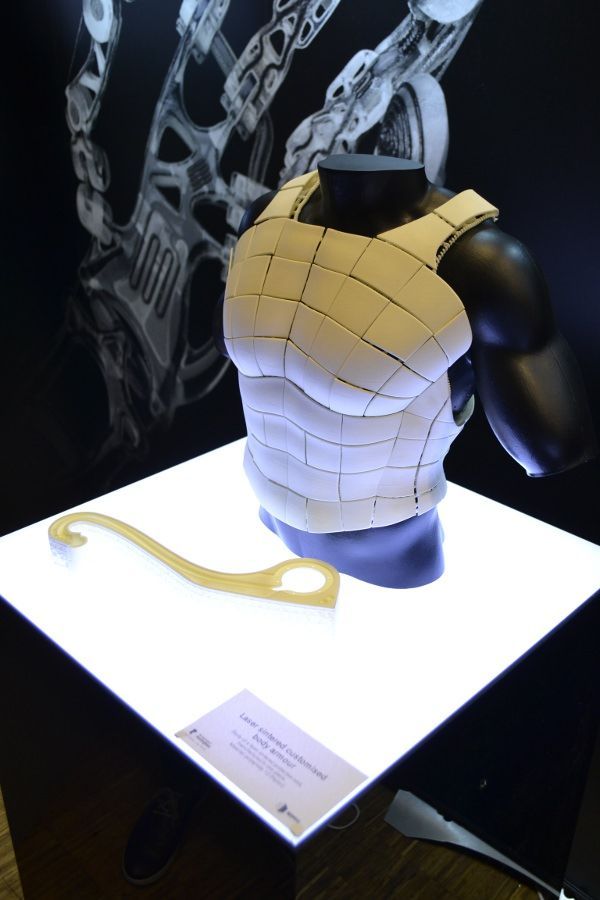 QIDI TECH X-Max (Best for Prototypes)
QIDI TECH X-Max (Best for Prototypes) Build volume: 300 x 250 x 300 mm | Layer Resolution: 100 micron | Filament diameter: 1.75 mm | Print Speed: 50mm/s
Little-known 3D printer company QIDI TECH hit a home run with this 3D printer, the X-Max. These guys put a lot of effort into R&D and they like challenging the industry and pushing new changes.
The X-Max has a lot going for it, starting with its badass name. No numbers, not a super long name, not a code for anything. From their “X” series printers, this one pushes it to the max.
The build volume is huge (the 2nd largest build volume in this 3D printer for cosplay list). And the resolution is pretty respectable. For cosplay enthusiasts, this is good news as it means less time spent finishing and touching up prints.
For around 1 grand you’re getting a super sleek looking enclosed 3D printer for cosplay with futuristic lines. And even if you’re not a fan of totally enclosed printers, this one is pretty easy to “drop the top” to turn it into an open printer.
And even if you’re not a fan of totally enclosed printers, this one is pretty easy to “drop the top” to turn it into an open printer.
What other features does the X-Max have?
The X-Max has a cool 5” touchscreen that makes life easy.
This 3D printer also allows for WiFi connection.
That means you can start a print from anywhere in the world, as long as you have a connection to WiFi. This is not a common feature for other printers, and it’s one of the best additions to a printer if you’re lazy like me, or always on the move.
I mentioned they love new features, this 3D printer was the first that I know of that offers interchangeable extruders and a dual-zone print bed.
One extruder and one half of the print bed are designed for low-temperature and flexible filaments. The other is designed for high-temperature and abrasive filaments. This is incredible if you like toying around with different filaments.
If you have the money to invest this is a bargain 3D printer that can compete with industrial-grade machines.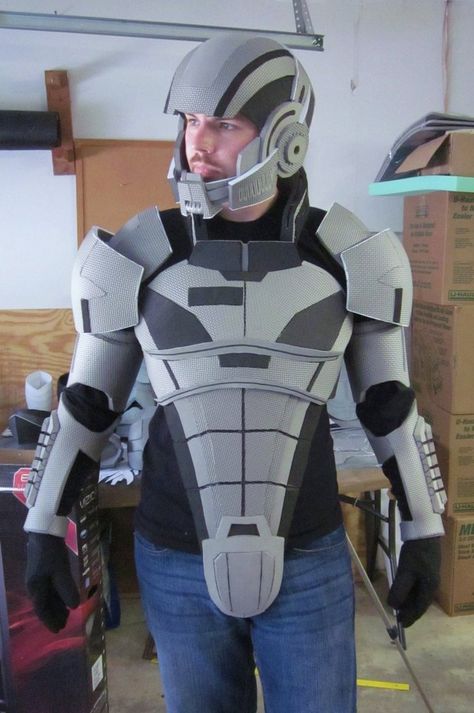
This is the best 3D printer for cosplay for beginners if you want a machine that is easy to use and operate, prints reliably out of the box (after leveling the bed), want to print big and want the peace of mind of great customer support.
- Huge volume
- Realiable and ideal for creating protypes
- WiFi capabilities for remote printing
- Purifying air filter
- Really quiet
- Great print bed
- Totally enclosed
- Two interchangeable extrudes
- Slow printing speed
- Final surface quality can be sub par
- Bulky - large overall area
- Can be expensive for some
Check Latest Price
5.
 Monoprice Maker Select PLUS (Best Budget Pick)
Monoprice Maker Select PLUS (Best Budget Pick) Build volume: 200 x 200 x 180 mm | Layer Resolution: 100 micron | Filament diameter: 1.75 mm | Print Speed: 150 mm/s
Another great pick for cosplaying, the Monoprice Maker Select PLUS has a ton of great selling points. The most notable being that it’s built from the mighty Prusa i3 MK2S. Since it uses the same drives and skeleton, it’s naturally a reliable unit.
This model comes with a touchscreen which makes it really easy to use – just follow the written instructions! It’s also really rare for a budget printer to have a touchscreen, so that’s a huge plus for the PLUS. The aluminum heated bed has also meant you can print using a ton of different filaments.
Sure, the build volume is on the small end compared to the other 3D printers for cosplay on this list. But it’s still a decent size.
The price tag is a huge bonus for this unit.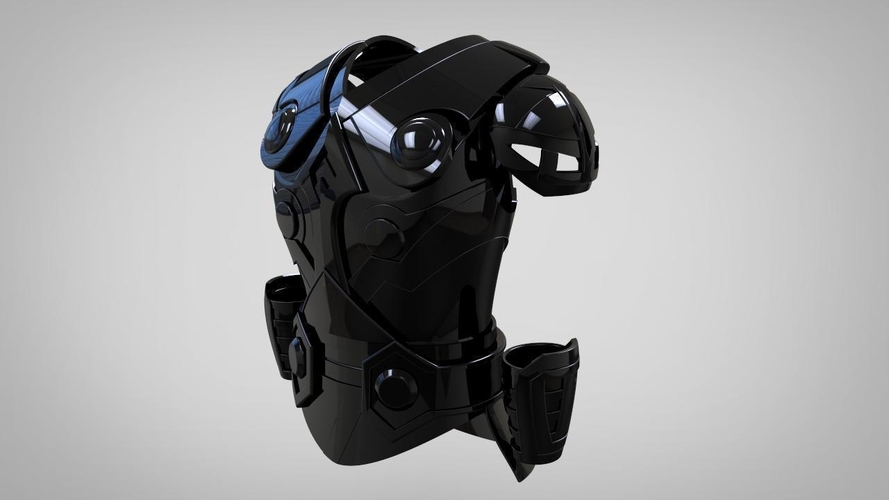 It’s one of the less expensive options you’ll find. My friends tell me that their setup took them less than an hour from the box to their first print. It comes with an instruction manual to help you along the way.
It’s one of the less expensive options you’ll find. My friends tell me that their setup took them less than an hour from the box to their first print. It comes with an instruction manual to help you along the way.
As far as cosplayers are concerned, this is a good pick because it’s easy to use, is friendly on your wallet, and delivers great prints with little troubleshooting needed. This is the most affordable 3D printer for cosplay.
- Great budget printer
- Easy setup
- Easy to use
- Aluminum heated bed
- Print quality is great
- Noisy
- Slower than others
- Community is lacking in comparison to other printers
- Parts are growing more and more sparse
Check Latest Price
6.
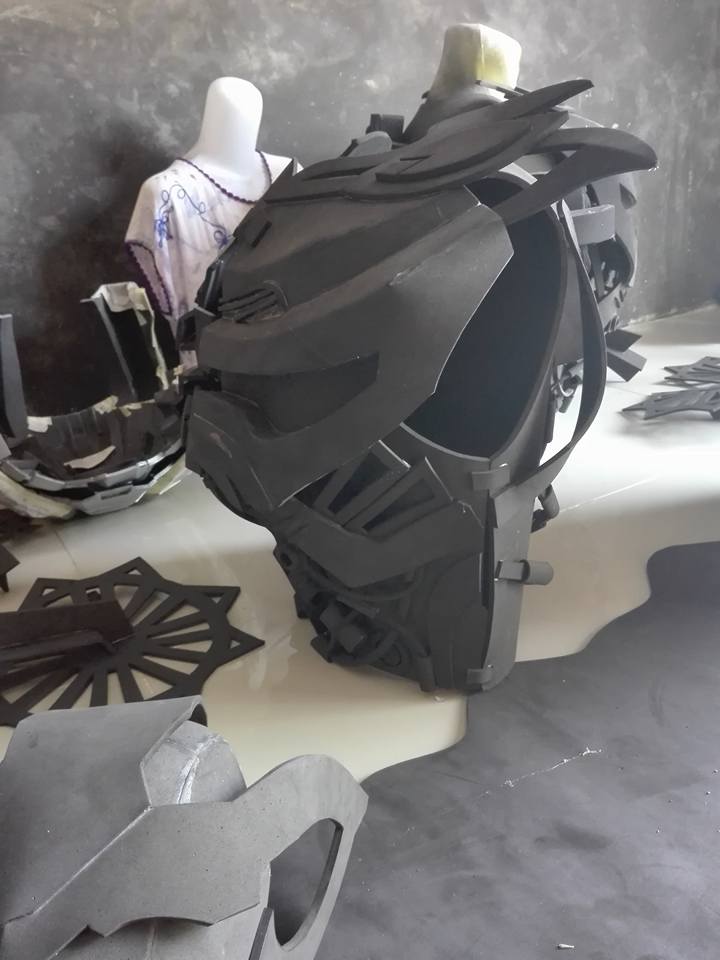 Lulzbot TAZ 6 (Best High-End)
Lulzbot TAZ 6 (Best High-End) Build volume: 280 x 280 x 250 mm | Layer Resolution: 50 micron | Filament diameter: 3.0 / 2.85 mm | Print Speed: 200 mm/s
Lulzbot is a brand that has a whole line of printers that are workhorses. Of course, the TAZ 6 is no exception. The first 3D printer I ever used was a Lulzbot and it had a lasting impact on me. Like every other printer in their catalog, the TAZ 6 is hardworking and dependable. The printer itself has a minimalistic design that just makes sense.
The side-mounted filament is fed right into the hotend so there’s less that can go wrong. It has an open bed so you can troubleshoot and fix problems quickly. It boasts very simple linear rails with servo steppers that won’t quit. This all means that the design is top-notch and very little can break or go wrong.
If you remember the earlier section where we praised the Prusa i3 MK23 slicer software, this Lulzbot has the exact opposite comment.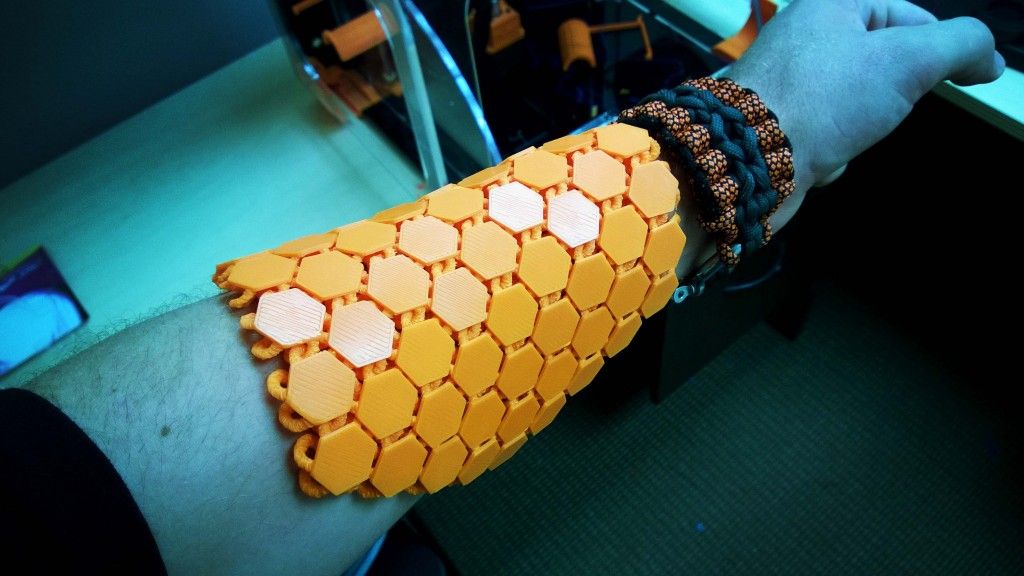 The TAZ 6 slicer software is one of the worst in the industry. Now – this won’t ruin your prints or make it any harder to use the machine. There will just be issues if you plan on designing your own parts for 3D printing for cosplay.
The TAZ 6 slicer software is one of the worst in the industry. Now – this won’t ruin your prints or make it any harder to use the machine. There will just be issues if you plan on designing your own parts for 3D printing for cosplay.
The print bed is ideal, and it’s like a flytrap for the prints. In fact, I actually broke parts trying to remove them from the print bed (before I learned about the wonders of a scraper). The nozzle will clean itself which means you will get great cosplay prints over and over again. The bed will automatically calibrate and adjust to eliminate any human errors associated with leveling.
The screen is clean and easy to read. The other good thing is it uses the more common filament diameter of 2.85 mm (sometimes called 3mm). This is a personal preference, but I’ve always liked 2.85 mm for a number of reasons.
The best thing about TAZ 6 is it has a huge print volume (the 3rd largest in this cosplay list). Additionally, it has great resolution and incredibly high print speed. Check, check, and check.
Check, check, and check.
Anyone who wants the best 3D printer for cosplay will realize this is an incredible option, as long as you can live with the price tag.
- Self-cleaning nozzle
- Super sturdy
- very solid design
- Easy to use
- Reliable Auto-calibration
- Great print bed
- Very expensive
- Slicer software is not ideal
Check Latest Price
Why 3D Print For Cosplay?
Without a machine shop or a woodshop, how are you supposed to put together a cosplay? Makeup, an outfit, and some foam can only get you so far.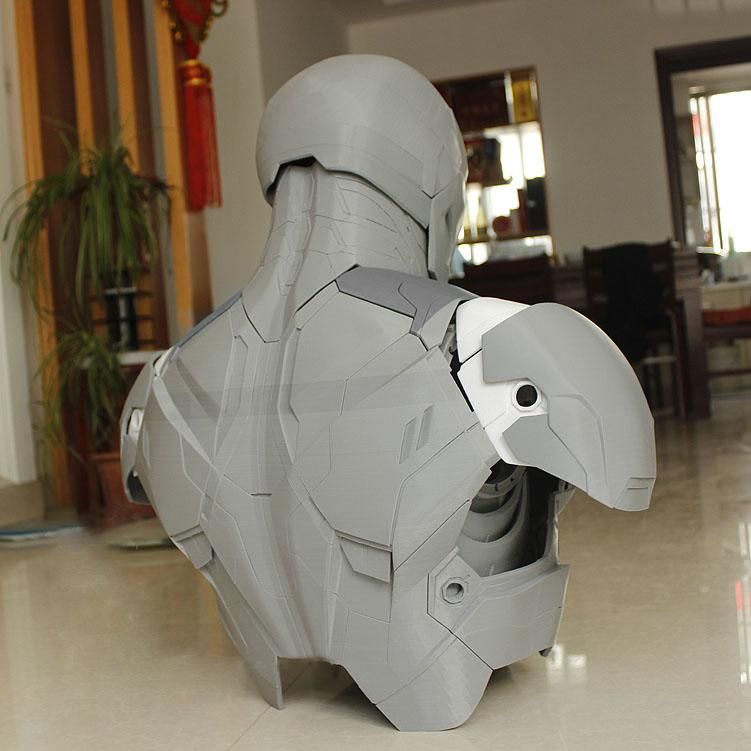 People have started to catch on that 3D printing for cosplay is a great choice for this area.
People have started to catch on that 3D printing for cosplay is a great choice for this area.
But why?
Cosplay is all about dressing and acting the part. You want to feel like the character you’re portraying. Have you ever realized that when you’re dressed like a businessperson you feel like a businessperson?
So how do you dress like Bucky, the Winter Soldier? You just take off your arm and get a hold of a nifty cybernetic prosthetic, right?
Well, that’s one option. The other option is 3D printing.
3D printing is great for cosplaying because there’s so much flexibility with what you can print. Different colors, different materials, not to mention different geometries. The basics of 3D printing have always been if you can design it and your printer is big enough, you can make it.
But not every 3D printer for cosplay is made alike.
Let’s take a look at what features matter when you’re picking the best 3D printer for cosplay and armor making.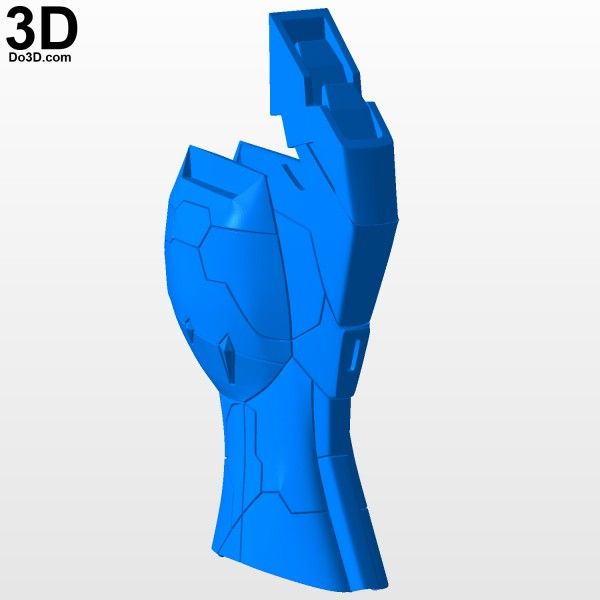
Features To Consider for A 3D Printer For Cosplay
3D printers have about a hundred different features you can focus on. Through trial and error, I learned which ones are important for different projects. For cosplaying, there are two really important features:
- Build volume, and
- Resolution
There are also a dozen other features that are going to come in handy. Let’s take a look at what I mean.
Build VolumeThe build volume of a 3D printer is how big of a part you can print. In other words, what’s the biggest cuboid (3D rectangle) you can print? 3D printer companies are polite, though. They realize we aren’t all math whizzes, so they give us the build volume in 3 dimensions.
A printer’s spec sheet might read something like “Build volume: 10 inches x 8 inches x 6 inches”. If you’re following along at home, this means you can print a cuboid that’s 10 inches wide, 8 inches long, and 6 inches tall.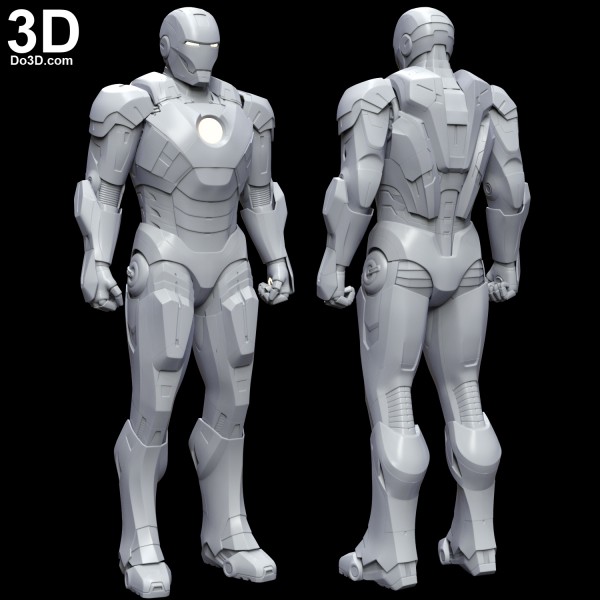 That’s the biggest shape.
That’s the biggest shape.
If you want to print a part that’s 11 x 10 x 10, then this printer will not work for you. Of course, there are ways to design around this constraint, but let’s not overcomplicate things, okay?
To recap; the best feature of your 3D printer for cosplay? Your printer’s build volume needs to be big enough to print the part you want. Your Winter Soldier cosplay might wind up looking like a T-Rex if your printer is undersized.
ResolutionThe next most important 3D printer feature for cosplaying is resolution.
Now, this concept is more technical but let’s keep it simple. 3D printers have a specific resolution. Compare this to the resolution of a picture you might see online. We can all agree that a 480p picture looks a lot different than a 4K picture.
Just like the pixels in that picture, a 3D printer has limits to its resolution.
A 3D printer with high resolution can print a beautifully rounded sphere. A 3D printer with low resolution will print a sphere that looks like it came from Minecraft.
A 3D printer with low resolution will print a sphere that looks like it came from Minecraft.
For more professional-looking cosplays, you’re going to want to lean towards the higher-resolution printers. They will create more rounded and realistic-looking shapes and curves. This matters a lot. I mean, unless you’re cosplaying as a Creeper, I guess.
The problem with high resolution?
High sticker price. Of course.
But the difference between high and low printer resolution is the difference between a Groot cosplay and a Plank cosplay. There’s a bit of a balancing act to find a 3D printer for cosplay with a quality resolution at a reasonable price. Don’t worry, we cover this in our product reviews.
Filament TypesThere are a ton of different types of filaments you can use on a 3D printer.
For reference, “filament” is another word for the type of material you can print with.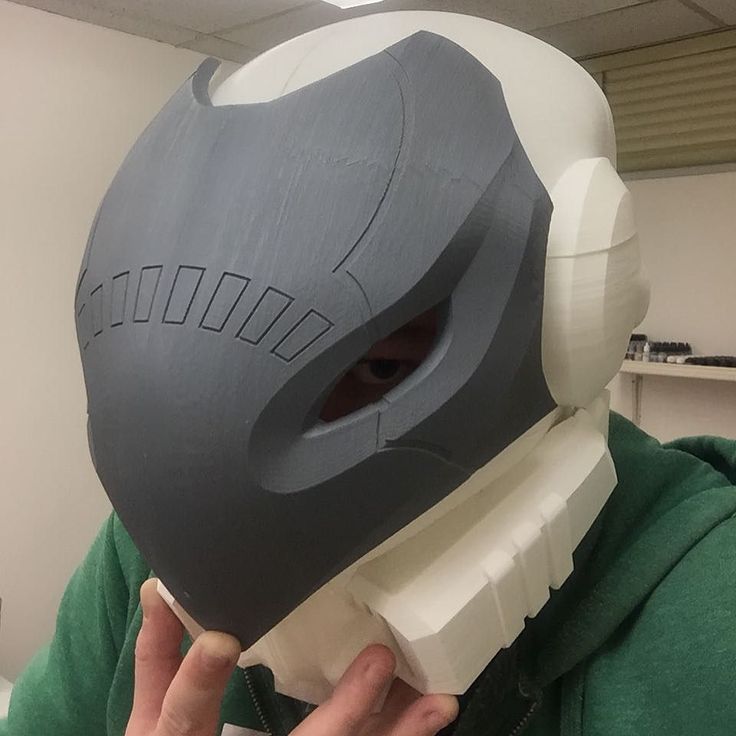
Common filaments are PLA, ABS, and Nylon – but there are so many more! Did you know there’s a wood-grain PLA filament that actually looks like wood when the print is finished? Imagine how your Groot cosplay will look when you use that bad boy.
There’s also a glow-in-the-dark line of filaments that would be great for a Cheshire Cat cosplay. Or carbon-fiber-infused filaments for your Genji cosplay. You can start to imagine all the different options as you scroll a list of filament types.
The problem is that some 3D printers for cosplay can’t print certain filament types. It all comes down to how hot the hot-end, or extruder, can get. A higher max temp for an extruder means you can print more types of filaments. If your printer limits the type of filaments you can use, it also limits the types of cosplay you can perform.
HATCHBOX 1.75mm Black PLA 3D Printer Filament, 1…
Sale
SUNLU PLA 3D Printer Filament, 1. 75 PLA Filament…
75 PLA Filament…
OVERTURE PETG Filament 1.75mm, 3D Printer…
Ease Of UseThe last consideration is how easy the printer is to use. This is a little harder to quantify and the specs won’t tell you a good story of how easy it is to use the printer. You can learn more about how easy a printer is to use by talking to people who own the printer, reading reviews online, or using the printer on your own.
Ultimately, you want a 3D printer for cosplay that’s easy to use so you’re not spending unnecessary time troubleshooting and fixing the printer.
Conclusion
There’s a lot to think about here. You’re a cosplayer and you want the best 3D printer for cosplay for your own props and costumes. Look at all the choices you have!
First, you have to consider what size items you’ll be printing. The build volume will limit how big you can go. Your Hulk cosplay won’t be so Incredible if all of the pieces have to be shrunk down to fit your printer.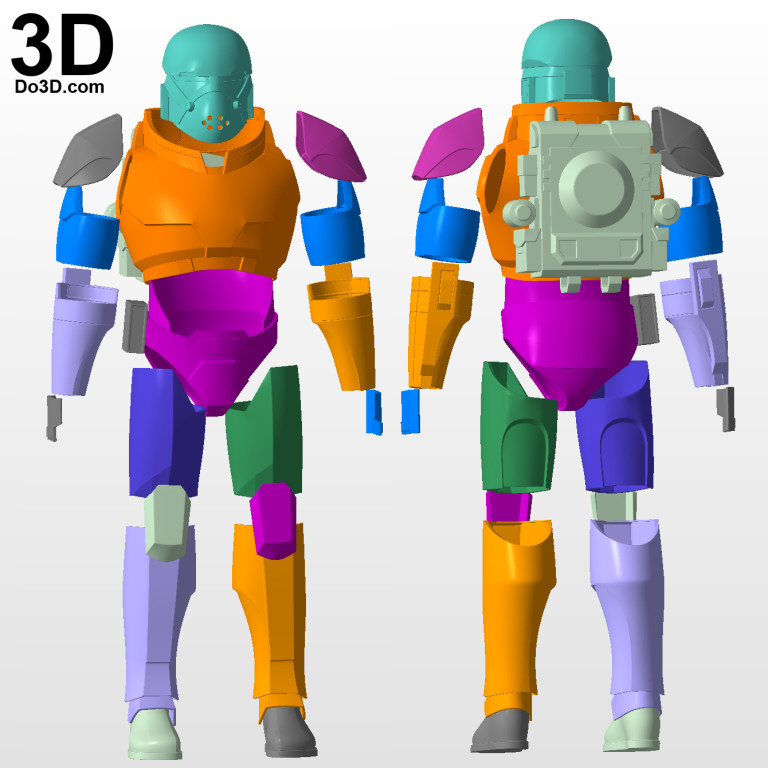
The next important feature is the resolution. If you’re making a lot of rounded and curved features, you’ll want to go for a printer with a low number for its resolution value. Finally, you’ll want to take a look at how easy the printer is to use, and how many different types of filaments you can print using it. You don’t want to buy a 3D printer for cosplay and realize that it doesn’t print the type of material you want.
Lastly, you also have to make sure the printer fits in your budget. At the end of the day, anyone of these printers is great for 3D printing cosplay, and you’ll be happy with any of the options you pick.
Pat Nathaniel
Pat is the editor-in-chief at Printing Atoms. He has a BS in Mechanical Engineering from the University of Florida and wants to spread the word on 3D printing. When he's not writing, he likes to tinker with his Ender 3 Pro, test filament brands, and scuba dive.
The 7 Best 3D Printers for Cosplay in 2021 According to 4,000+ Reviews
Welcome to the Thomas guide to the best 3D printers for cosplay in 2021.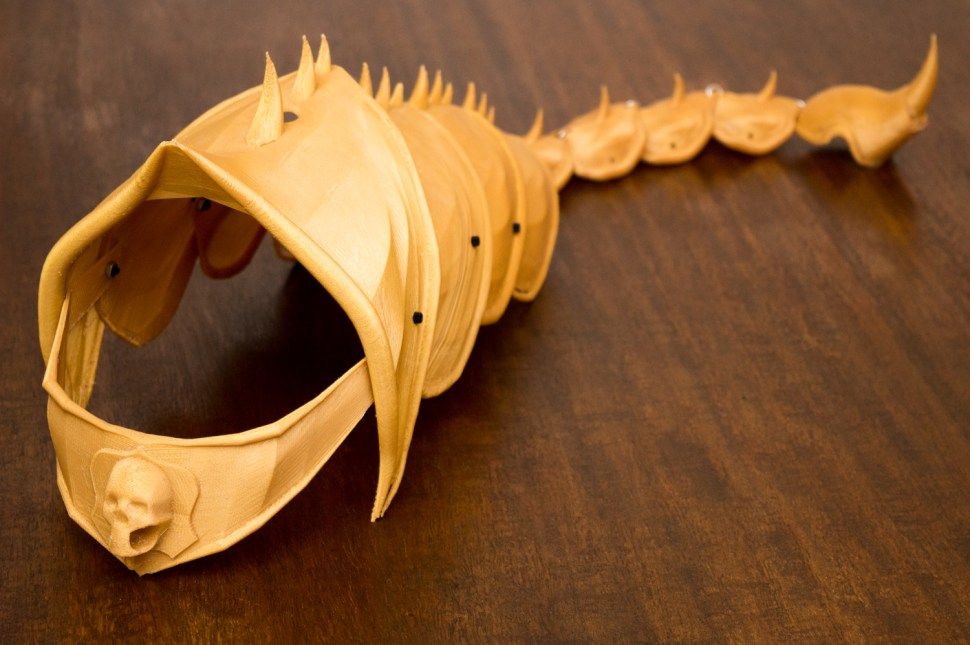 Thomas has been connecting North American industrial buyers and suppliers for more than 120 years. When you purchase products through our independent recommendations, we may earn an affiliate commission.
Thomas has been connecting North American industrial buyers and suppliers for more than 120 years. When you purchase products through our independent recommendations, we may earn an affiliate commission.
Although dressing up in fancy dress, or masquerade, has been around for centuries, the term "cosplay" (costume play) was coined in the 80s after the World Science Fiction Convention where many fans turned up dressed as their favorite sci-fi characters. Since then, cosplay has become synonymous with these types of conventions, particularly in the world of anime, comics, and video games. There are even cosplay competitions and contests held regularly around the world, at these conventions, and also as independent events. A cosplay 3D printer can change the game and open up a world of creativity and opportunities for cosplay enthusiasts.
The rise in the interest in cosplay over the last few decades has led many hobbyists down the road of planning and designing their own elaborate costumes for their favorite fantasy characters.
While this obviously involves things such as make-up and body paint and fabric/costume design, these creative designers are now looking to use additive manufacturing (otherwise known as 3D printing) to take their designs to the next level.
So for those looking into purchasing the best 3D printer for cosplay to design and print their own costumes, we've laid out the best choices for 3D printers for Cosplay below:
A Baroque-style cosplay corset made with a 3D printerImage credit: Shutterstock/Fernando Cortes
Many pro cosplayers have turned to 3D printing their own cosplay gear because, in addition to the freedom to create, and immediacy, a 3D printer ends up paying for itself and can save a lot of money in the long run, as cosplay outfits can be very expensive. Most of our best picks below are at affordable prices, starting as low as $210, and are easy to use so even amateur cosplayers—or anyone who just wants to get a bit more creative at Halloween—can make their own impressive 3D printed cosplay props and outfits.
What's the Best 3D Printer for Cosplay?
The best cosplay 3D printer for you depends on your needs. For smaller cosplay masks and props, a mini (and economical) 3d printer like the Monoprice 15365 Select could be fine, but for bigger items, like helmets or armor, you'll need a 3D printer with a large build volume like the Creality CR-10S. To make your life easier, consider a 3D printer with automatic bed leveling. You can also choose a 3D printer based on the type of filament you prefer to use. In addition, it's good to consider whether fine detail or speed are an important factor. Whatever you're after, we've picked out 7 of the best 3D printers for cosplay currently on the market to help you with your search.
1. Best Budget 3D Printer for Cosplay—Monoprice
The small Monoprice 15365 Select mini 3D printer is a great economical option if you don't mind making your cosplay outfit and props, i.e. a 3D printed cosplay helmet, in sections (one cosplayer said that they "made some fallout cosplay on it by cutting the models down and gluing them later"). It's perfect for beginners as it comes fully assembled, with a free PLA filament sample, and a preloaded micro SD card with a bunch of printable 3D models for you to get some practice in.
It's perfect for beginners as it comes fully assembled, with a free PLA filament sample, and a preloaded micro SD card with a bunch of printable 3D models for you to get some practice in.
2. Best Quality Cosplay 3D Prints—Dremel
According to just a couple of the many happy reviewers, the Dremel Digilab 3D20 3D printer is "able to print fine detail very well," and is "easy to use and makes nice detailed prints." This highly-rated Amazon's Choice product is fully enclosed to create a stable temperature for prints, and increase user safety. The full-color LCD touchscreen makes operation simple, it comes completely preassembled, and you get a 0.5kg filament spool with it too. "Very impressed with the detail and quality of the prints," reads another review.
BUY NOW: $679, Amazon3. Best 3D Printer for Cosplay Helmets—Anycubic
Although not the largest 3D printer on the market, the Anycubic Mega-S 3D printer still has the capacity to make 3D printed cosplay outfit parts and accessories thanks to its larger build volume.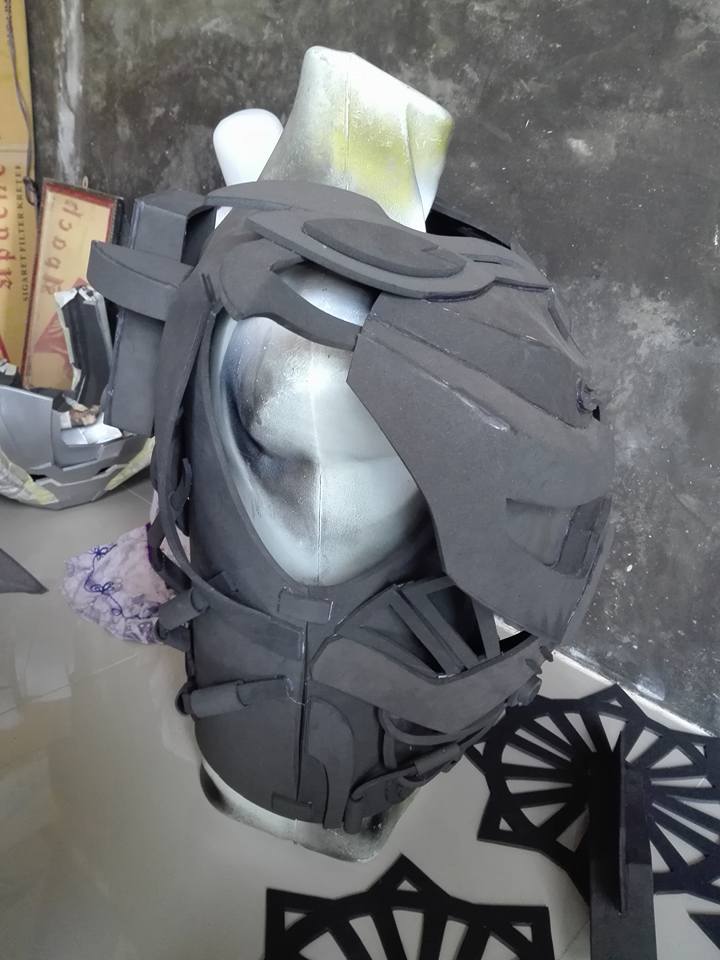 "Its bigger size means you can print things for cosplay, masks, and more," wrote one reviewer. With only three setup steps straight out of the box, you can start printing within minutes. It's compatible with TPU, PLA, and ABS filaments, and one new buyer commented on its ability to "make printing of full-scale cosplay helmets a breeze to print out and enjoy!"
"Its bigger size means you can print things for cosplay, masks, and more," wrote one reviewer. With only three setup steps straight out of the box, you can start printing within minutes. It's compatible with TPU, PLA, and ABS filaments, and one new buyer commented on its ability to "make printing of full-scale cosplay helmets a breeze to print out and enjoy!"
4. Best Large 3D Printer for Cosplay—Creality
"This printer was suggested to me by several friends because it’s a good one to get into 3D printing and for Cosplay," wrote one reviewer of the high-precision and super stable Creality CR-10S FDM 3D printer. It has FDM (fused deposition modeling) technology, using continuous filament via a spool. It is compatible with 10 different printing materials, and, thanks to its large build size of 300x300x400mm, making props and other cosplay accessories has never been easier.
BUY NOW: $439, Amazon5.
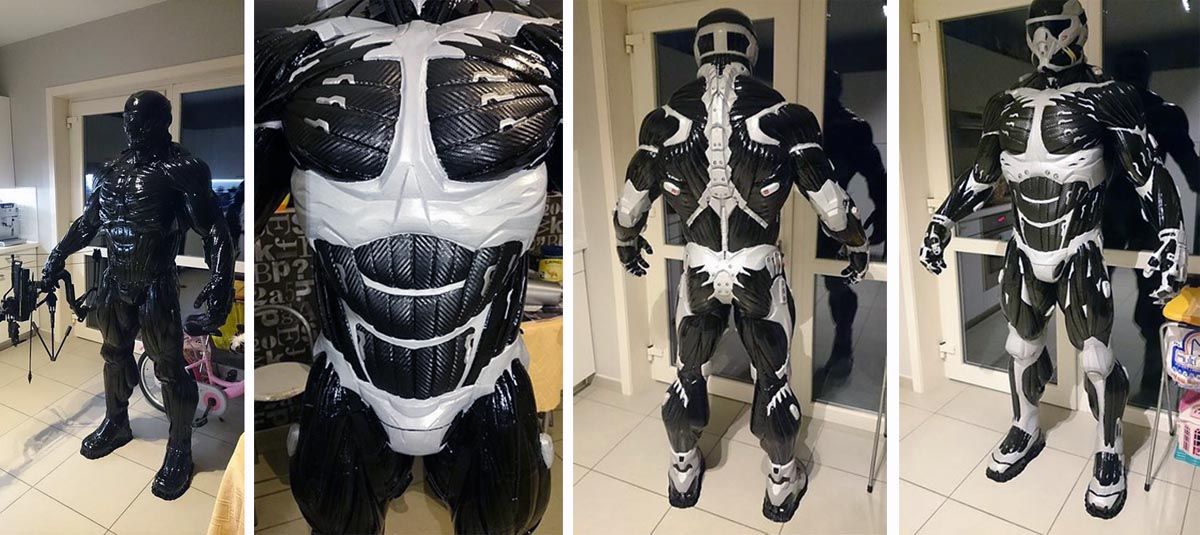 Best 3D Printer for Cosplay Props—AnyCubic
Best 3D Printer for Cosplay Props—AnyCubic A step up from the Mega-S listed above, the Anycubic Mega X 3D printer has all the great qualities of its predecessor but with a few more perks, including a much larger build volume, lower extruder and heatbed temperatures, and a metal frame. It also comes with a free 1kg PLA filament. One happy customer wrote, "You are not going to find a better printer at this price point. Period. This machine is actually underpriced for the quality it outputs.
BUY NOW: $479.99, Amazon6. Best Quiet 3D Printer for Cosplay—Eryone
In order to print elaborate cosplay items, it would likely be necessary to have the machine running for hours on end, or even through the night, so a noisy printer could prove extremely inconvenient. This is where the Eryone Thinker SE 3D printer—a quiet 3D printer with a large bed for cosplay creations—comes in. "This is a very good printer for the price," wrote one reviewer.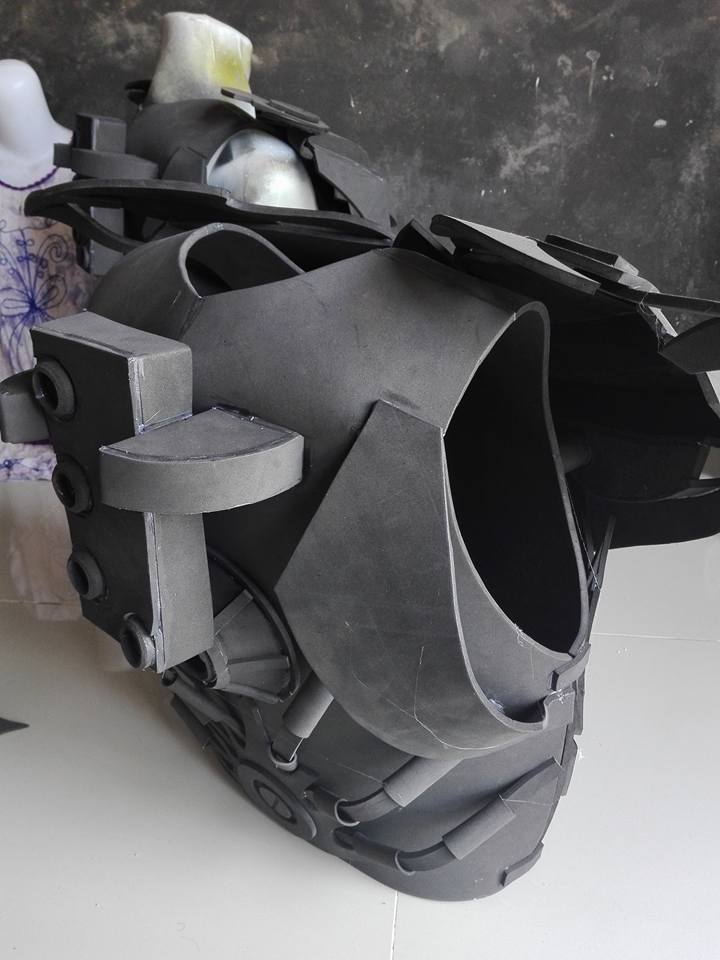 "It has a larger print-bed which is great for cosplay props and large tabletop terrain."
"It has a larger print-bed which is great for cosplay props and large tabletop terrain."
7. Best Professional 3D Printer for Cosplay—Ultimaker
If up till now you've viewed our best 3D printers for cosplay suggestions as child's play, then let us introduce you to the Ultimaker 2+ 3D printer—a professional-grade enclosed printing machine that's perfect for all your cosplay needs. Made with superior materials, and providing intricate detailing, a quiet operation, even air flow, and easy nozzle changes, this printer is "very easy to set up and get printing," as per one reviewer. "I was able to do a couple of test prints on the first day and printed my new CAD part the next day. Worked flawlessly." Another user remarked that this printer's best feature "is the lightweight print head," adding that "the guide/motion system is very clever, and about as light as can be. That light weight means there are very few vibrations and low noise compared to other 3D printers.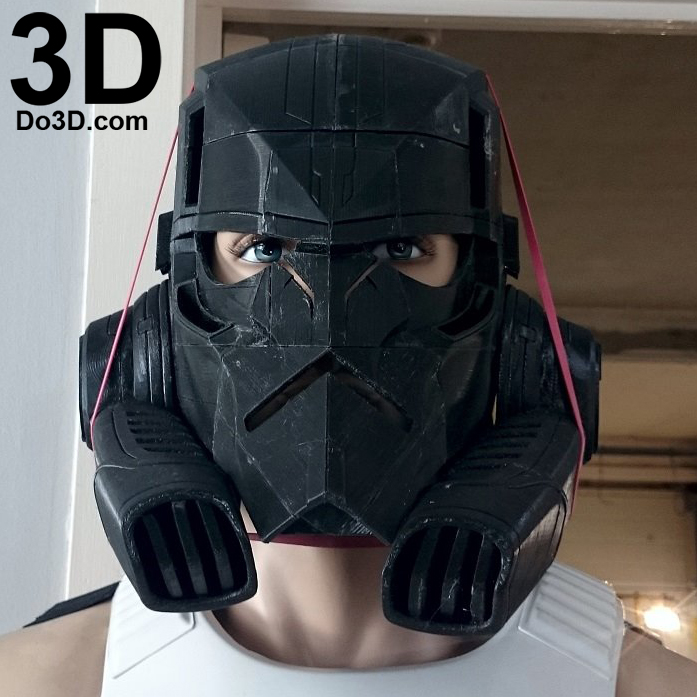 "
"
Best 3D Printers for Cosplay —Summary
The Creality CR-10S FDM 3D printer's large build volume allows for larger prints, saving you the task of having to print your cosplay items in smaller pieces before putting them together. For beginners, the economical Anycubic Mega-S 3D printer is a great first cosplay 3D printer, but for more advanced cosplayers, the Ultimaker 2+ 3D printer is the way to go. We hope our review of 3D printers has been helpful. For more 3D printers and other 3D printing suppliers, including 3D printer filaments suppliers, additive manufacturing suppliers, 3D photographic printing services, and 3D sand printing additive manufacturing, consult our additional guides or visit the Thomas Supplier Discovery Platform.
Sources
- https://en.wikipedia.org/wiki/Cosplay
- https://www.pcmag.com/news/how-to-3d-print-your-cosplay-costumes
Other 3D Printing Articles
- Top 3D Printing Services Companies in the USA
- Origins of 3D Printing and Additive Manufacturing
- Overview of 3D Printing Technologies
- Top 3D Printing Manufacturers and Suppliers (Publicly Traded and Privately-Owned)
- Top Suppliers of Additive Manufacturing Consulting Services
- 8 Best 3D Printers Under $1000
- 9 Best 3D Printers Under $500
- 9 Best 3D Printers Under $300
- 10 Best 3D Printers Under $200
Other Best Product Articles
- The Best Cordless Impact Wrenches
- The Best Portable Generators
- The 7 Best Portable Band Saws
- The Best Electric Space Heaters
- The Best Mini Milling Machine
- The Best Attic Ladders
- The Best Air Purifiers for Smoke
More from Custom Manufacturing & Fabricating
90,000 use of a 3D printer for the manufacture of cosplay elements, examples of use 07. 10.2021
10.2021
Content
-
- Advantage 3D prints for the manufacture of costume elements 9000
- Making master models
- Rating of the best cosplay printers
- FDM printers
- Photopolymer printers
- Totals
Probably everyone wanted to feel at least for a while in the shoes of their favorite hero. Or briefly be in a fantasy world. Cosplay allows, at least for a while, to plunge into a fictional world with its own laws.
Cosplay should not be confused with role-playing, because cosplay does not imply the development of the character or history of the character. It focuses on the detailed reproduction of the image of the character to the smallest detail.
Some people think that cosplay is limited only to curvy girls in skimpy outfits, but this is far from the case. The skill of some cosplayers is amazing. They manage to single-handedly create amazing things with precision and detail that many workshops cannot reproduce.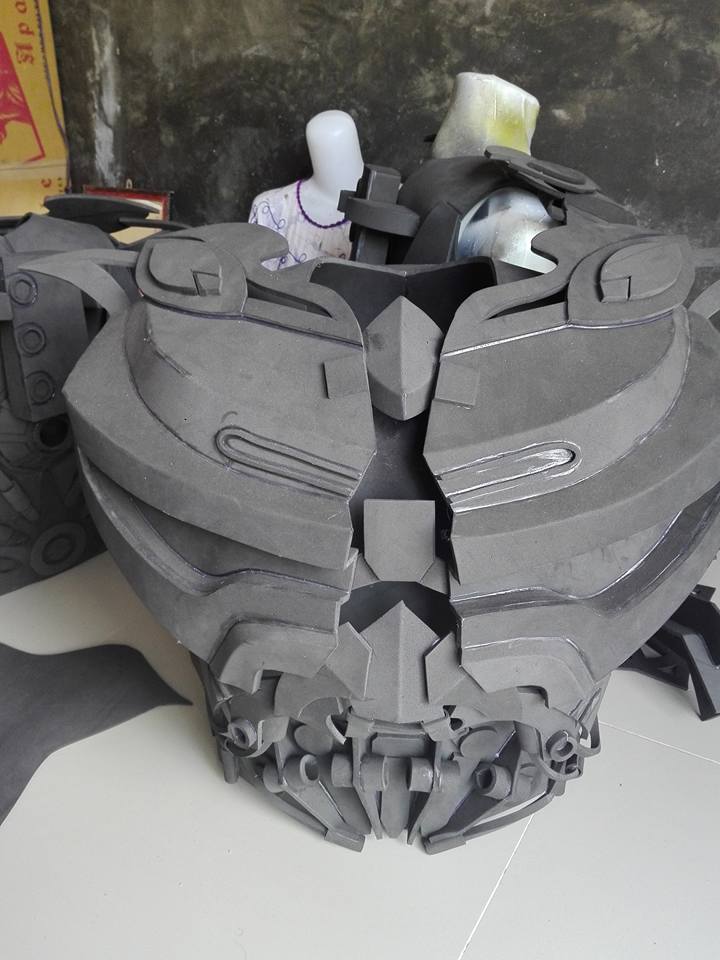
Terminator suit from Warhammer 40k
A good cosplay is not only an external correspondence to the appearance of the selected character, it is the ability to convey the character and other features of the character (for example, characteristic movements, facial expressions, etc.). At photo shoots, with the help of Photoshop, they try to add the atmosphere of the world to better convey the nuances of the character.
It is believed that the term Cosplay was coined by Japanese journalist Nobuyuki Takahashi. The word itself is a combination of the initial letters of the word costume (costume) and play (play).
Warhammer 40k universe photo shoot
The advantage of 3D printing for costume elements
Previously, a cosplay costume was literally made from improvised materials. Each, to the best of his skills, available tools and ingenuity, used various, mainly construction, materials to assemble the costume - isolon, glue gun, tourist rugs, etc.
Now available special materials for the manufacture of parts. The most popular of them is Eva foam.
Eva
Eva is a very convenient material for making a variety of armor. The biggest advantage over other materials is thermoplasticity. When heated, eva easily bends, and after cooling, it keeps its shape. On sale you can find eva foam of various hardness and thickness.
Making armor from eva
But there are certain nuances - for the correct cutting of eva, patterns are needed (there are special patterns or patterns for pepakura are redone). When cutting, it is necessary to take into account the location of the edges and make the cut not straight, but at an angle. Sections, after gluing, must be further processed with sandpaper. The surface of eva is porous, so it is advisable to treat the surface with latex before painting to obtain a smooth surface. For painting and putty, it is desirable to use elastic materials, because eva still remains a little flexible.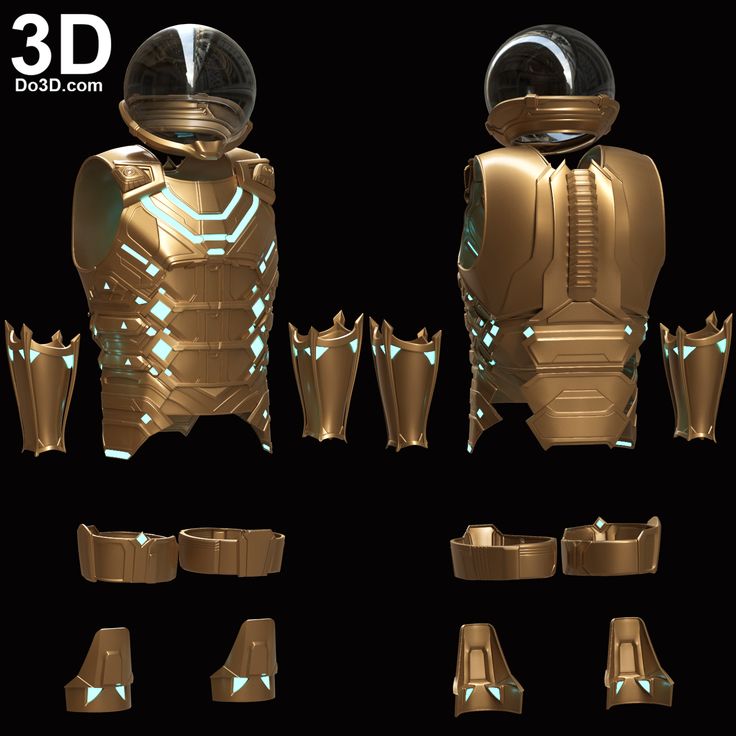
Pepakura
Papercraft - this is the name of patterns (reamers) for the manufacture of various elements from paper.
Not only cosplayers are addicted to papercraft, for some it is enough to glue a paper model for a collection.
Usually pepakura is used as an inexpensive and easy way to make massive armor when there is no way to get eva foam.
First, the paper model is glued together. Paper is usually chosen with a high density to minimize the risk of deformation of the model during further work.
Finished paper model
After gluing, the model must be strengthened. For this, fiberglass and epoxy resin are usually used. When impregnating a paper model, it is very important to ensure that the geometry of the model does not "lead". Usually epoxy and fiberglass are applied in several layers. Before applying a new layer, it is necessary to wait for the polymerization of the old one, usually it takes 24 hours.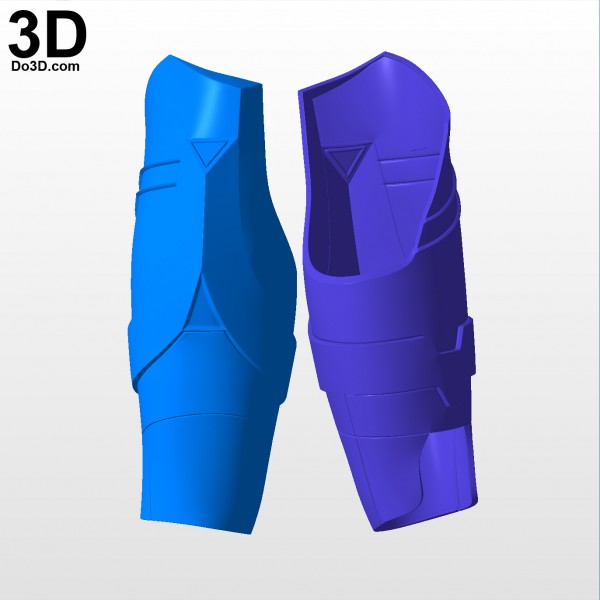
The resulting model is strong, but too angular. Models in papercraft are high-poly and it is necessary to manually smooth out the angularity with putty and sandpaper. After painstakingly removing the surface of the model, it can be painted.
Left paper model, right after strengthening, processing and painting
Models made by this method are very heavy due to epoxy and putty. And the manufacture of one product takes a lot of time, but this method remains popular because of its availability and low cost. Epoxy can be found in any building market, and fiberglass is easily interchangeable with other materials.
Modeling and casting
This method is suitable when you need to quickly produce many identical parts. A master model is made (for example, from plasticine) and a mold is removed from it using special silicone, into which epoxy, special two-component plastics or polyurethanes can then be poured, depending on what characteristics you need to get in the finished product.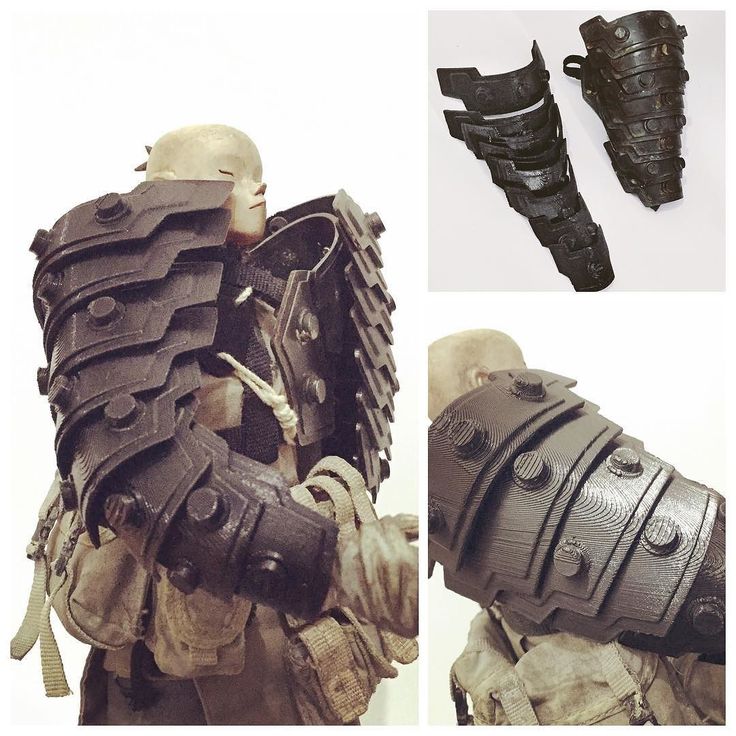
Two-component plastic purity print with metallic powder
To color the finished casting, you can knead the dye into liquid plastic or rub the mold with special powders.
It makes sense to make silicone molds if you need to make many identical elements, it is not advisable to remove the silicone mold for one casting. Silicone is still not cheap and not everywhere you can buy it. In addition, it is necessary to have some skills in silicone and plastic/resin casting in order to minimize the amount of air bubbles and get a quality casting.
Handy materials
And of course, masters know how to use the most unexpected things for cosplay. For example, PVC pipes are often used to make frames for fantasy weapons. Izolon for making feathers for wings, etc.
Acrylic folding knife
Using PVC pipes as a sword frame
3D printing
Using a 3D printer to make a complete costume may not always be advisable due to the high cost.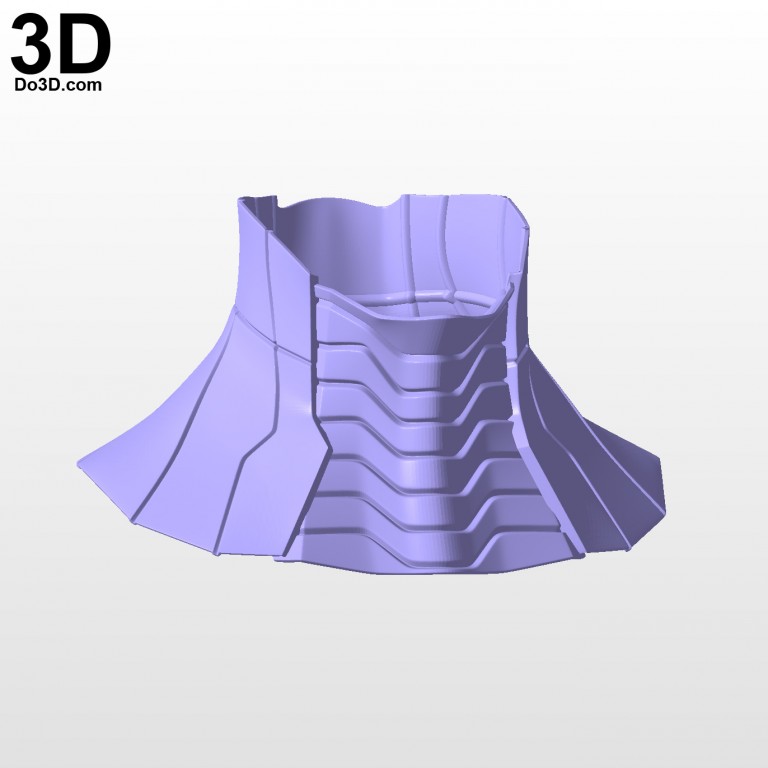 But in the manufacture of elements with complex geometry, small elements or high detail, it can greatly facilitate the task and save a lot of time. A 3D printer becomes indispensable for printing engineering, moving elements. This is very convenient when a seat for all wiring and electronics is immediately included in the model and you don’t have to puzzle over where to place everything after assembly.
But in the manufacture of elements with complex geometry, small elements or high detail, it can greatly facilitate the task and save a lot of time. A 3D printer becomes indispensable for printing engineering, moving elements. This is very convenient when a seat for all wiring and electronics is immediately included in the model and you don’t have to puzzle over where to place everything after assembly.
But 3D printing also has its drawbacks. When fabricated on an FDM printer, models must be further processed to obtain a smooth surface. If you print on a photopolymer printer, then the cost of the finished product will be quite high. Large elements of the costume will have to be printed in parts and then glued together.
Cosplay 3D printer application examples
Whole costume printing
A 3D printer is becoming an indispensable tool for manufacturing geometrically complex suits or, for example, functional elements of armor.
Iron Man Armor.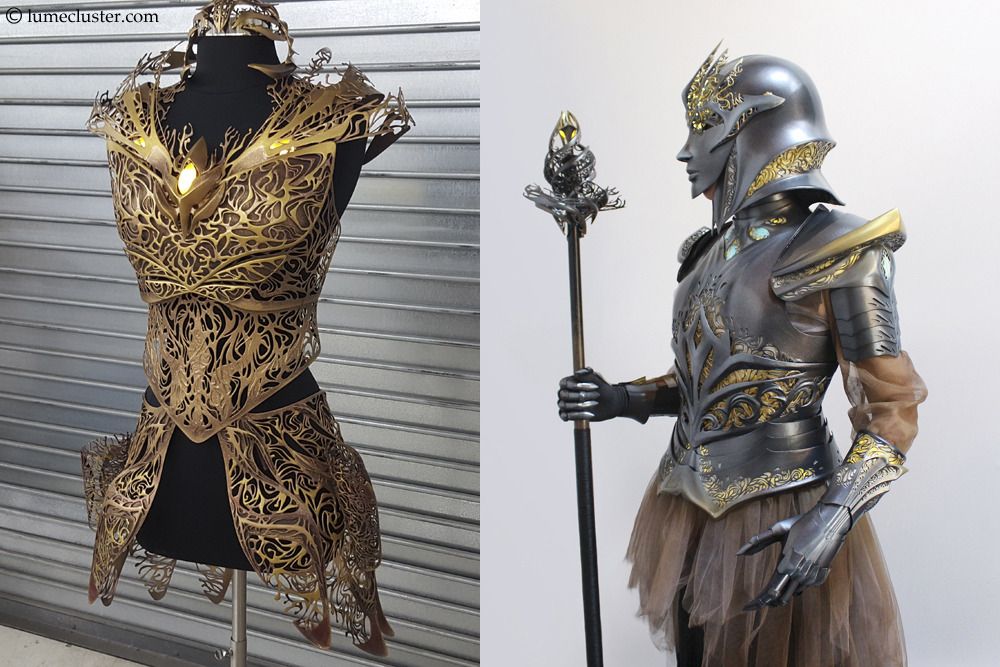
Emily Yarid has been modeling, building and refining Iron Man armor since 2013. She initially took it up out of boredom, deciding to upgrade the costume she had.
In the Tony Stark suit, the reactor glows, the helmet automatically closes and opens. On the back there are functional "wings" that open and close.
One of Emily's ready-made costumes
The girl uses a 3D printer to make armor elements. After printing, she processes and paints the details herself.
Printed Armor
Tony Stark Mask
HALO
A user with the nickname mosquitobandito collects full-fledged armor from the HALO universe.
Armor 3D model
Armor is almost entirely 3D printed. There are a lot of issues that need to be addressed when modeling to keep the armor as mobile as it is in the game.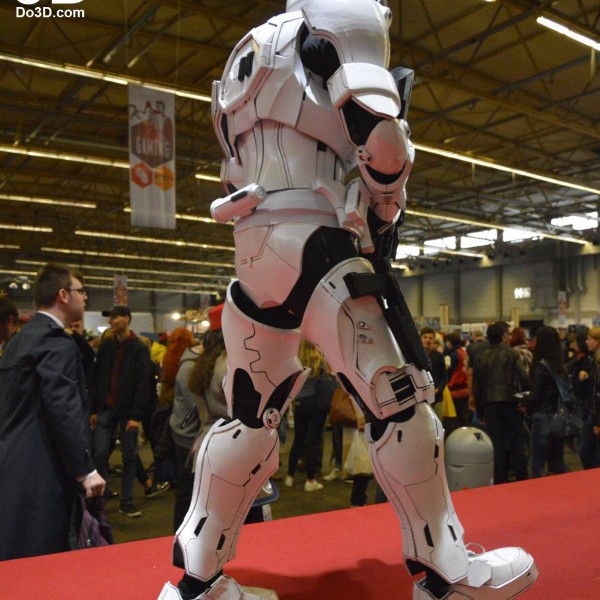
Shoe cover
Pre-assembly of the upper part of the armor before gluing and processing.
The armor part is pre-cut into several parts and printed in parts on an FDM printer. After printing, be sure to check how the parts fit together, as the plastic may shrink unevenly.
Treated and painted hand protection
Costume print
Making a full-fledged costume using 3D printing is not always justified. Simple shapes are much faster and cheaper to make from other materials such as eva.
But complex parts such as helmets, weapons, armor elements are much more accurate if they are made using 3D printing.
Steam Punk Star Wars Helmet
Hand making all the patterns would take much longer, and it is important to make all the patterns symmetrical. This is a very painstaking work that requires a lot of patience, perseverance and experience.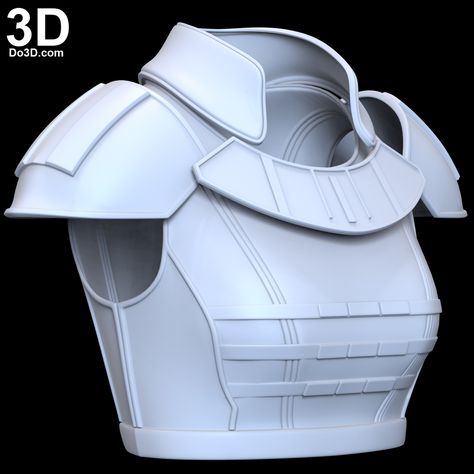
Iron Man Steampunk Helmet
Composite weapon
Some elements seem quite simple to manufacture, but it can be very difficult, even with a template, to make symmetrical and smooth bends.
Wolverine Collectible Helmet
Master model making
Sometimes the material with the desired properties is found only among foundry resins and plastics. But to remove the form, you still need a master model.
Epoxy sword casting
It was necessary to make a transparent sword. Epoxy resin is well suited for manufacturing. The master model (except for the rose) was printed on a 3D printer.
Prepared master model
The sword was printed in half - it is much easier to get a high-quality casting without bubbles. The halves of the sword are still the same and can be glued together.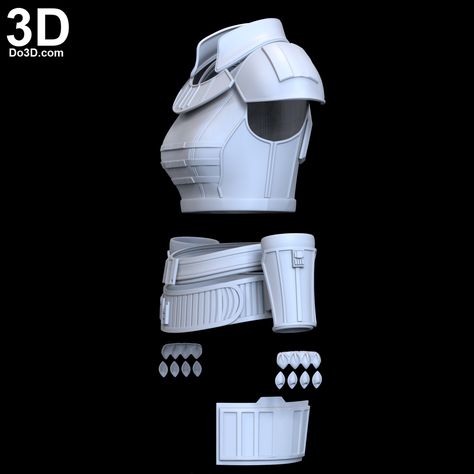 After printing, the surface of the master model was brought to perfect smoothness and primed.
After printing, the surface of the master model was brought to perfect smoothness and primed.
Formwork is being prepared from improvised materials for pouring silicone molds
Preparation of the master model for filling with silicone
A slightly tinted epoxy resin is poured into the resulting mold to give an icy blue tint. After casting, 2 halves can be glued together with the same epoxy.
The result is a stunning sword, as if carved from ice. Such an effect would be difficult to achieve using other materials.
Finished casting
Finished Epoxy Sword
Rating of the best cosplay printers
FDM printers
FDM technology for making cosplay has its pros and cons.
Pros:
-
Large build area. Some printer models can print an entire full-size helmet.
-
Inexpensive consumables.
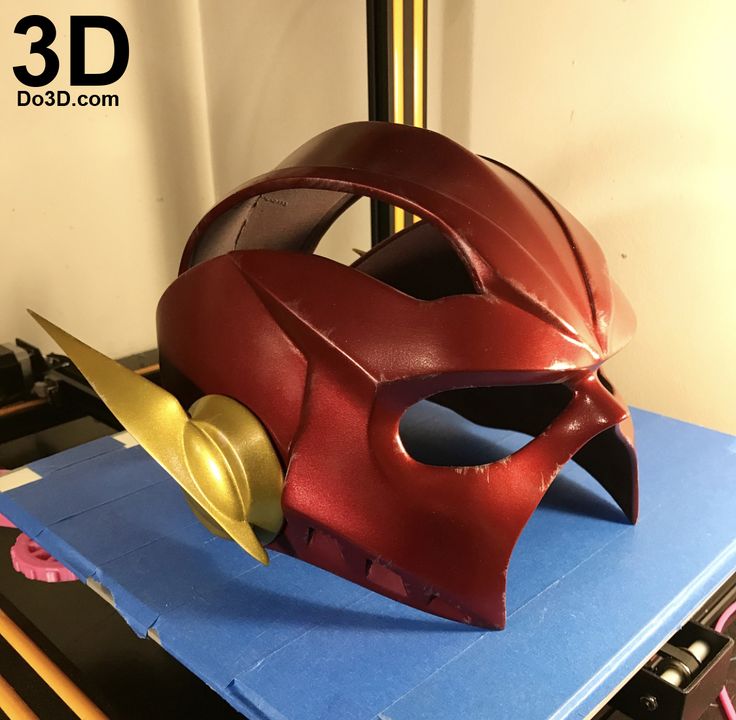 The cost of a plastic thread (filament) is still much cheaper than consumables for other technologies.
The cost of a plastic thread (filament) is still much cheaper than consumables for other technologies. -
A wide selection of different materials. You can find a filament for any task - from engineering to decorative.
Minuses:
Creality3D Ender 6 (build kit)
Creality3D Ender 6
Characteristics:
Print technology: FDM/FFF
Working area size: 250x250x400mm
Number of extruders: 1
Closed Camera: Yes
Heated table: Yes
Plastic type: ABS, ABS+, PLA, PLA+, PETG, Flex, Nylon (Nylon), ASA, Carbon, Decorative plastics, others
Inexpensive printer for a beginner who knows how to handle tools. Supplied as an assembly kit. A large build area will allow you to print large parts in their entirety, and the version with a closed body can print with any, even engineering, plastics.
FlyingBear Ghost 5 3D printer (assembly kit)
Flying Bear Ghost 5
Characteristics:
Print technology: FDM/FFF
Working area size: 255x210x200 mm
Number of extruders: 1
Closed chamber: No (but there is an option to purchase)
Heated table: Yes
Plastic type: ABS, ABS+, PLA, PLA+, PETG, Flex, Nylon (Nylon), ASA, Carbon, Decorative plastics, others
A very popular device due to its affordable price.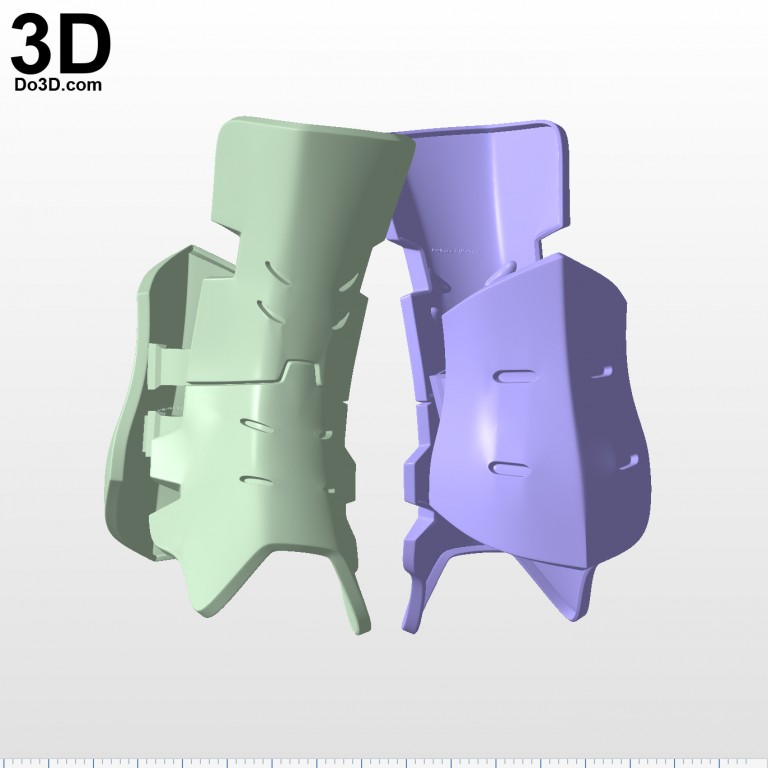 It is sold as a kit kit (for self-assembly), but thanks to the detailed instructions and a huge number of video guides, assembly should not be a problem.
It is sold as a kit kit (for self-assembly), but thanks to the detailed instructions and a huge number of video guides, assembly should not be a problem.
The huge fan base of FlyingBear Ghost 5 makes it easy to find ready-made upgrades and add-ons for the printer. This device is perfect for those who like to experiment and learn something new.
Wanhao Duplicator 6 Plus
Characteristics:
Print technology: FDM/FFF
Working area size: 200*200*180mm
Number of extruders: 1
Max. extruder temperature: 260 degrees
Closed Camera: Yes
Heated table: Yes
Plastic type: ABS, ABS+, PLA, PLA+, PETG, Flex, Nylon (Nylon), ASA, Carbon, Decorative plastics, others
Wanhao Duplicator 6 Plus is a reliable workhorse for those who do not want to delve into all the nuances of a 3D printer. Available in 2 versions - with a closed case and not. It is better to immediately purchase a printer with a closed housing so that there are no problems with printing engineering plastics such as ABS, Nylon, etc.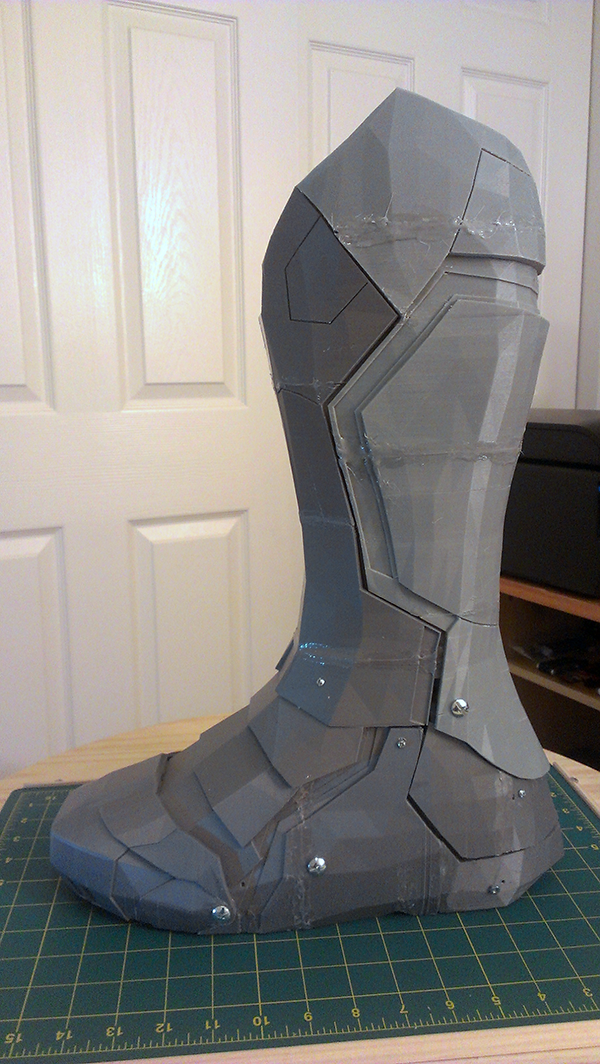
Raise3D Pro2
Raise3D Pro2
Characteristics:
Print technology: FDM/FFF
Working area size: 305x305x300 mm - when printing with the 1st extruder;
280x305x300 mm - when printing with 2 extruders
Number of extruders: 2
Max. extruder temperature: 300 degrees
Closed Camera: Yes
Heated table: Yes
Plastic type: ABS, ABS+, PLA, PLA+, PETG, Flex, Nylon (Nylon), ASA, Carbon, Decorative plastics, others
This is already a serious device with a large print area and 2 extruders for printing complex models. Raise3D Pro2 can be a great help in a small workshop for making decorations and cosplay.
Photopolymer printers
Photopolymer printing is not yet so common for making large items due to expensive consumables, but Western cosplayers have already appreciated the advantages of photopolymer printers for printing small items.
Pros:
-
The ideal surface of the finished model.
-
Amazing detail that is impossible to get on FDM printers.
-
Large selection of resins. You can get an optically transparent model.
Minuses:
Anycubic Photon Mono
Anycubic Photon Mono
Characteristics:
LCD display resolution: 2560x1620 (2K)
XY Positioning Accuracy: 0.051mm
UV wavelength: 405 nm
Working area size: 130x80x165 mm
Layer thickness: 0.01-0.15mm
Affordable photopolymer machine with a small print area. Suitable for making small items.
Phrozen Sonic Mighty 4K
Phrozen Sonic Mighty 4K
Characteristics:
LCD resolution: 9.3" 4K Mono LCD
XY positioning accuracy: 52 microns
UV wavelength: 405 nm
Working area size: 200x125x220 mm
Layer thickness: 0.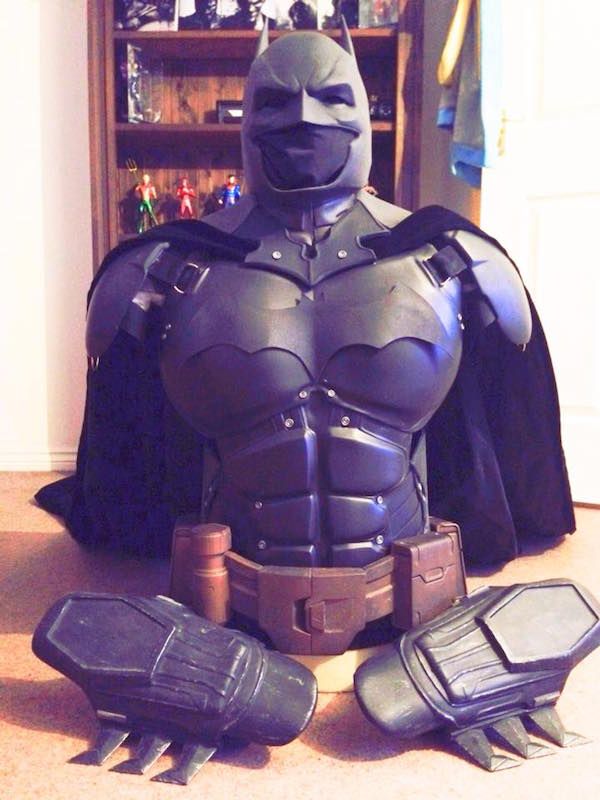 01-0.3mm
01-0.3mm
The Phrozen Sonic Mighty 4K is a professional 3D printer with a large print area and a 4k monochrome sensor. This allows you to quickly receive finished products with amazing accuracy.
Phrozen Sonic MEGA 8K
Phrozen Sonic MEGA 8K
Characteristics:
LCD resolution: 15" 8K Mono LCD
XY Positioning Accuracy: 43 µm
UV wavelength: 405 nm
Working area size: 330 x 185 x 400 mm
Layer thickness: 0.01-0.3mm
A professional 3D printer with a huge (by the standards of photopolymer printers) printable area. Perfectly fit into the workshop for the manufacture of various props.
Totals
Making cosplay requires a creative approach and solving various problems. After all, it is not at all easy to transfer into reality what is implemented in a film or game using computer graphics.
3D printing, due to its flexibility and versatility, can speed up and simplify the production of various costume elements.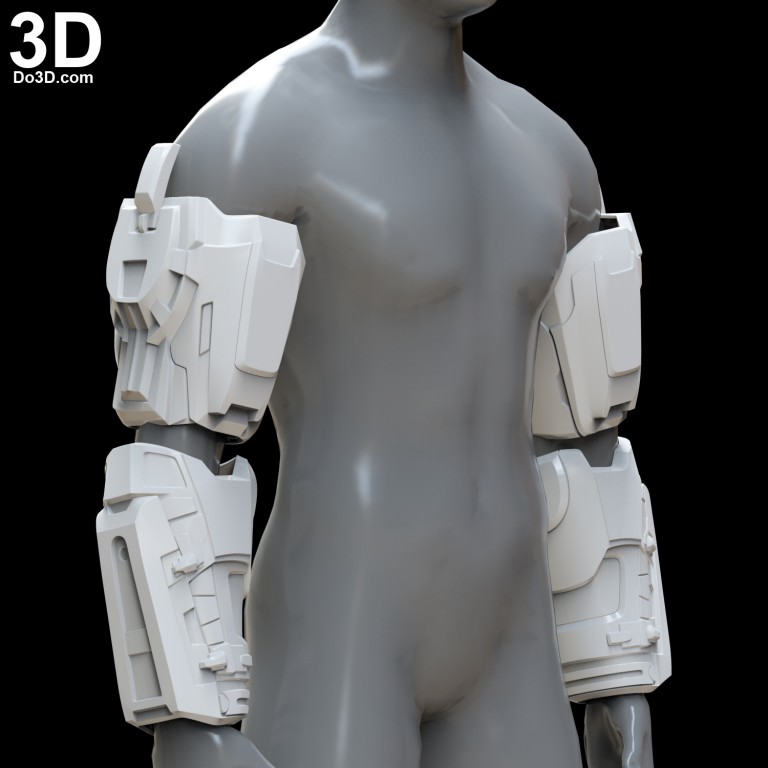 A 3D printer can help you get better quality stuff, even for beginners.
A 3D printer can help you get better quality stuff, even for beginners.
For workshops, a 3D printer can become an indispensable assistant in the manufacture of complex, movable costumes with movable elements. A big plus can be the ability to make an almost exact copy of any costume or its element at any time.
Free Shipping
Add to compare
Product added to compare Go
| Manufacturer | Phrozen
Free Shipping
Add to compare
Product added to compare Go
| Manufacturer | Anycubic |
Free Shipping
Add to compare
Product added to compare Go
| Manufacturer | Creality |
Free Shipping
Add to compare
Product added to compare Go
| Manufacturer | Phrozen |
Free Shipping
Add to compare
Product added to compare Go
| Manufacturer | Raise3D |
Free Shipping
Add to compare
Product added to compare Go
| Manufacturer | Wanhao |
Add to compare
Product added to compare Go
| Manufacturer | Flyingbear |
#Application
Expert in additive technologies and 3D printing with over 5 years of experience.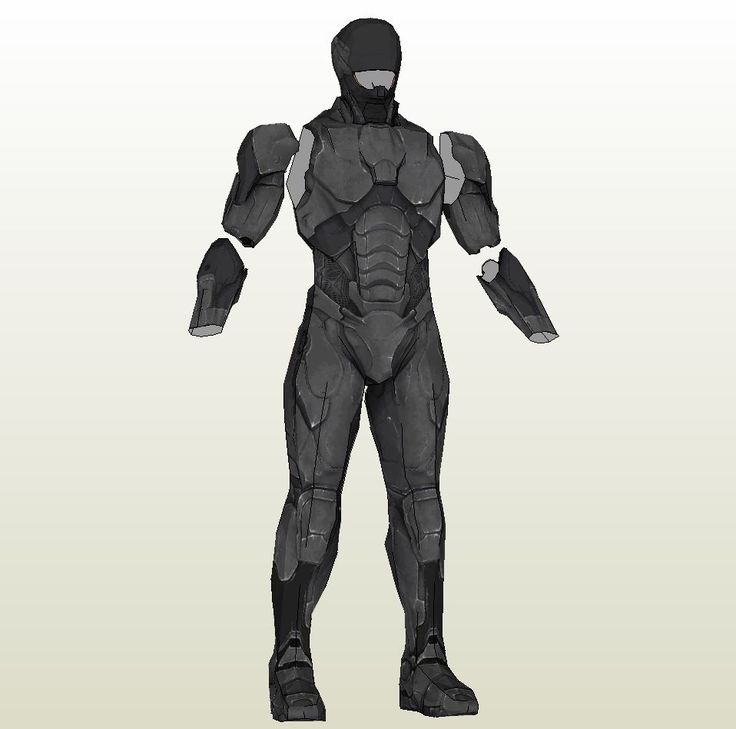
Share
all materials
3D printed cosplay
05/28/2020
The art of transforming into your favorite characters gave rise to a whole movement, the so-called "cosplay". With the development of technology, the images of heroes are becoming more and more complex, and in order to recreate such costumes, one sewing machine is no longer enough. Today, cosplay fans around the world use 3D modeling and 3D printing technologies to adapt intricate designs from movies and video games.
In the west, the cosplay movement is incredibly popular. Participants from different cities attend conventions in outfits, armor, futuristic costumes and the most unusual images, turning events into a real celebration. In Russia, cosplay is less developed, but the skill of 3D artists is very much appreciated by the Western audience.
What do you need to create a copy of a hero skin?
First of all, of course, you need a 3D model of the costume and all its attributes.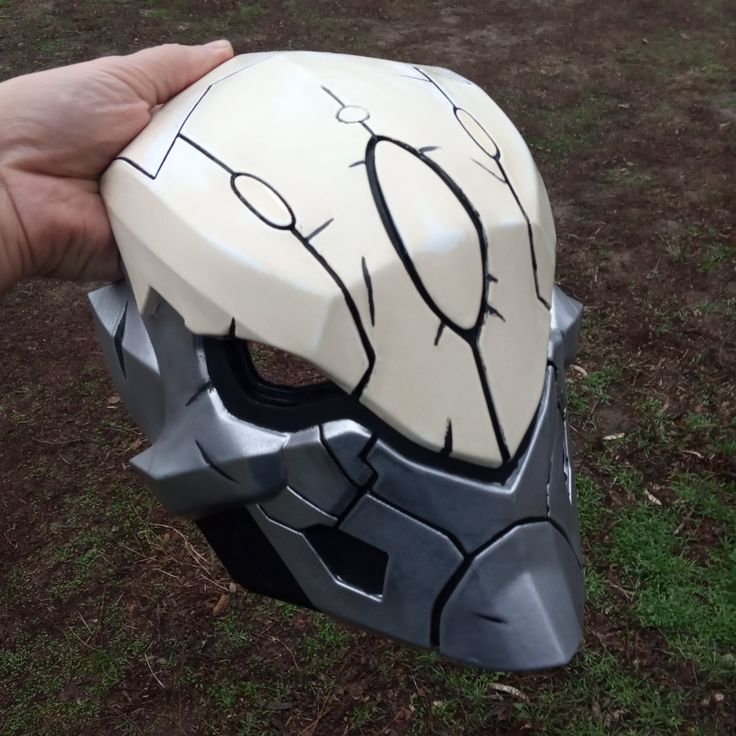 Given the popularity of the direction, on the Internet you can find many ready-made models on paid and free resources. But the most valuable are unique costumes. Therefore, the experience of 3D modeling and knowledge of programs is a huge plus.
Given the popularity of the direction, on the Internet you can find many ready-made models on paid and free resources. But the most valuable are unique costumes. Therefore, the experience of 3D modeling and knowledge of programs is a huge plus.
The next step is to adapt the costume to a specific person, taking into account height and parameters. Individual props should fit like a glove.
Having files of all parts of the costume of the required size, you can proceed to 3D printing.
Choosing the best 3D printer for printing props, you need to determine the size, design complexity and materials for future products. It depends on what parameters a 3D printer should have.
- Printable area size.
As a general rule, a cosplay 3D printer requires a large build area because you will be printing the parts to wear. The fewer seams there are on the suit, the stronger and more durable it will turn out.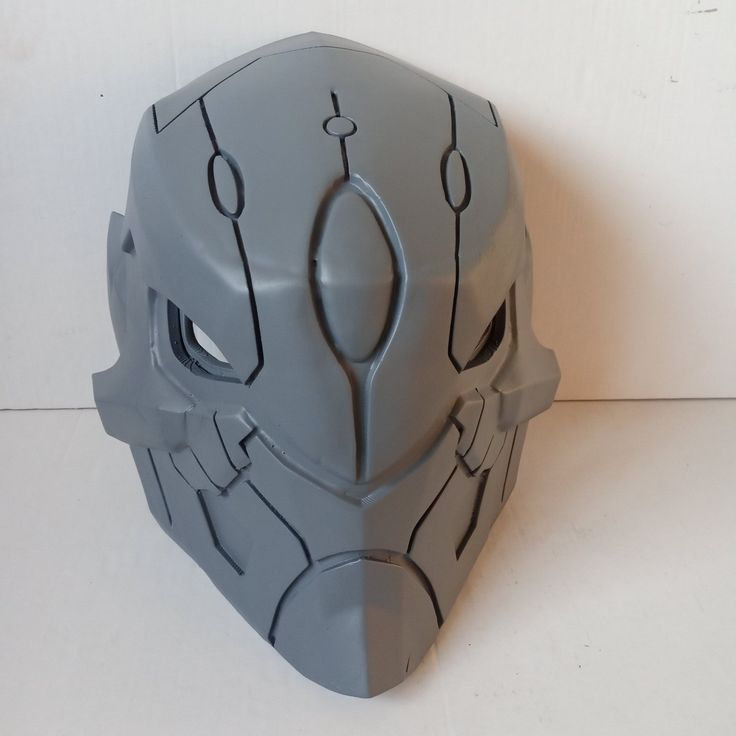
- Materials.
The ability to use decorative plastics, luminous threads or metal will make the costume more realistic and bright.
- And of course, print speed.
Print speed is very important when you are printing large objects. Even with a fast printer, printing a whole image will take a lot of time, so if you can use not one, but two devices, this will greatly speed up the process.
Which models are worth paying attention to?
The 3D printer Wanhao Duplicator i3 v 2.1 will do an excellent job of printing small parts of complex shape.
It is easy to work with and has already won the love of 3D makers all over the world. Despite its compact size, the printer is quite powerful and has established itself as a reliable workhorse. Can print with any plastics with heating temperature up to 240°C. Layer thickness from 0.1 to 0.